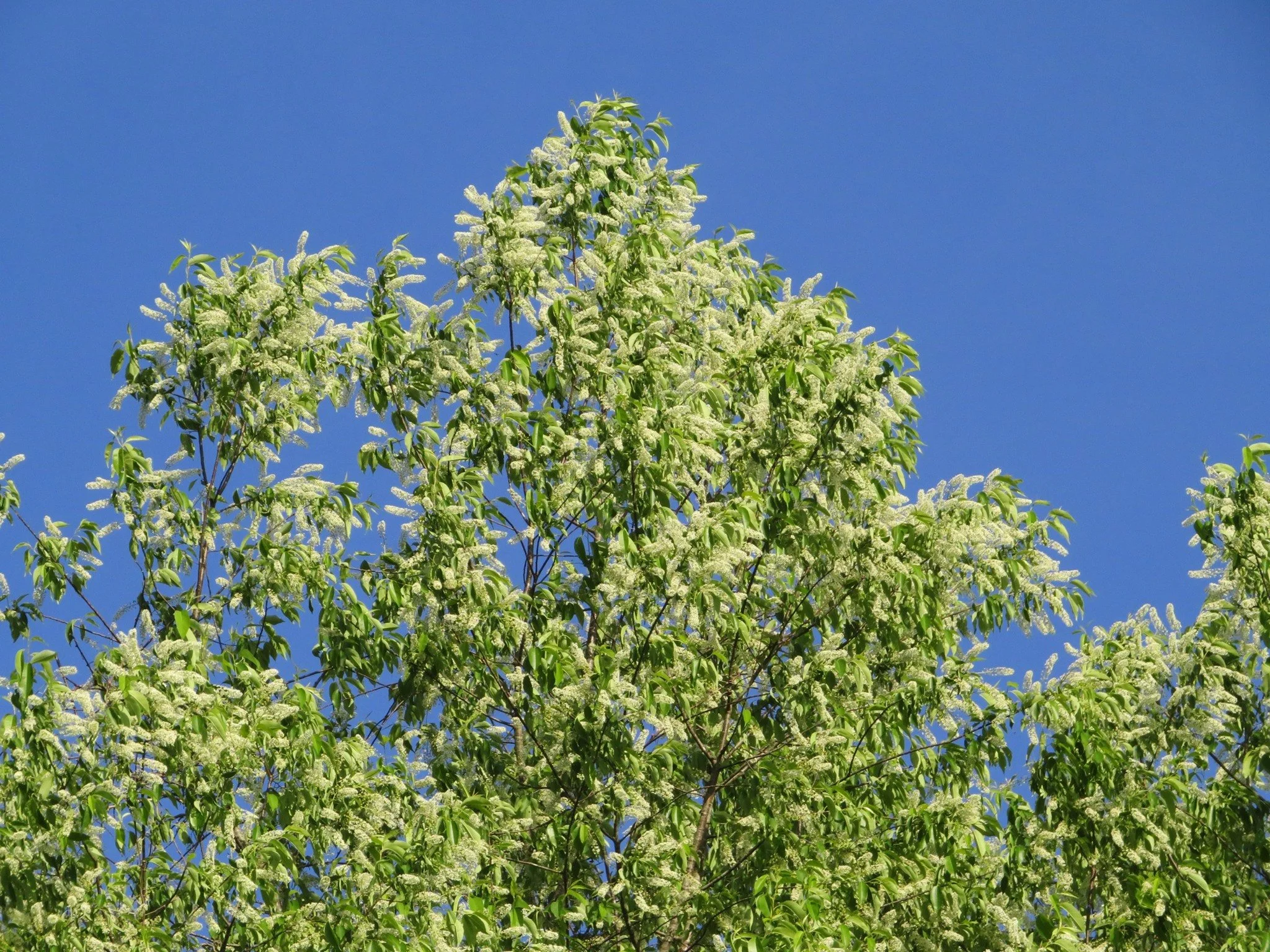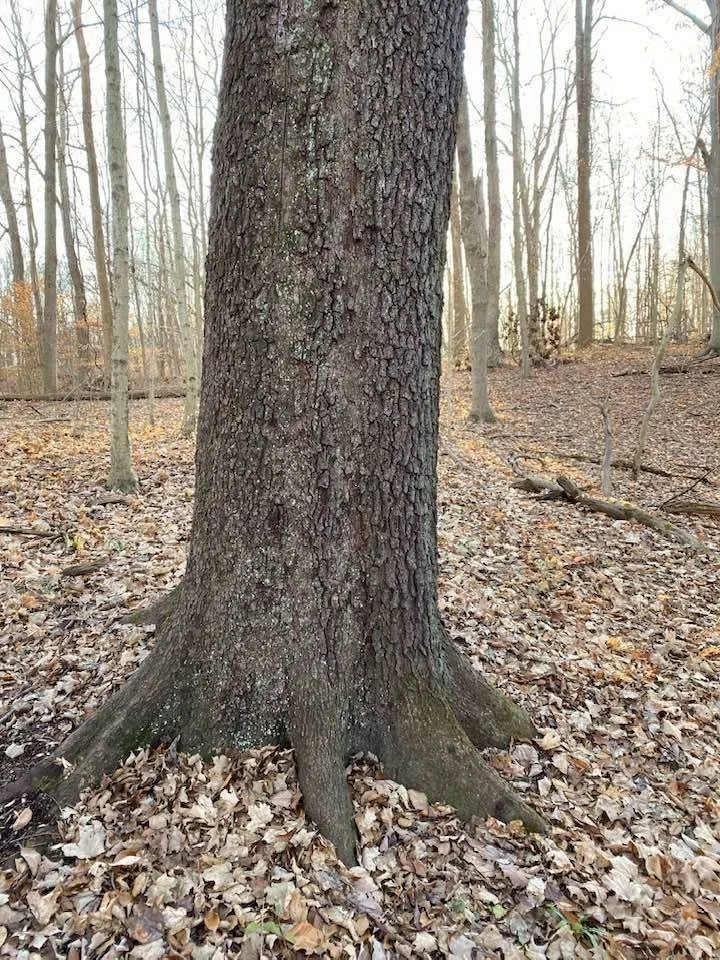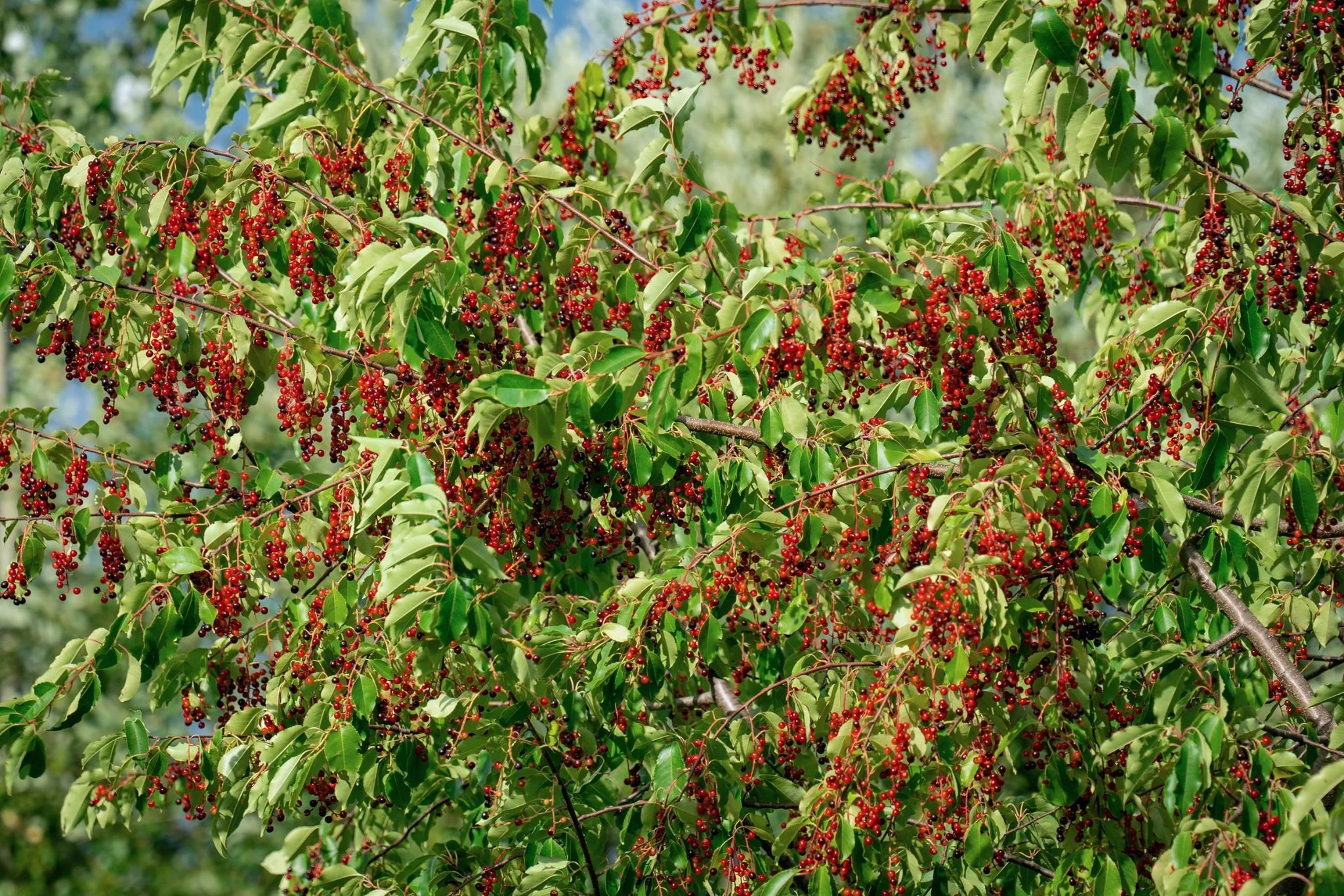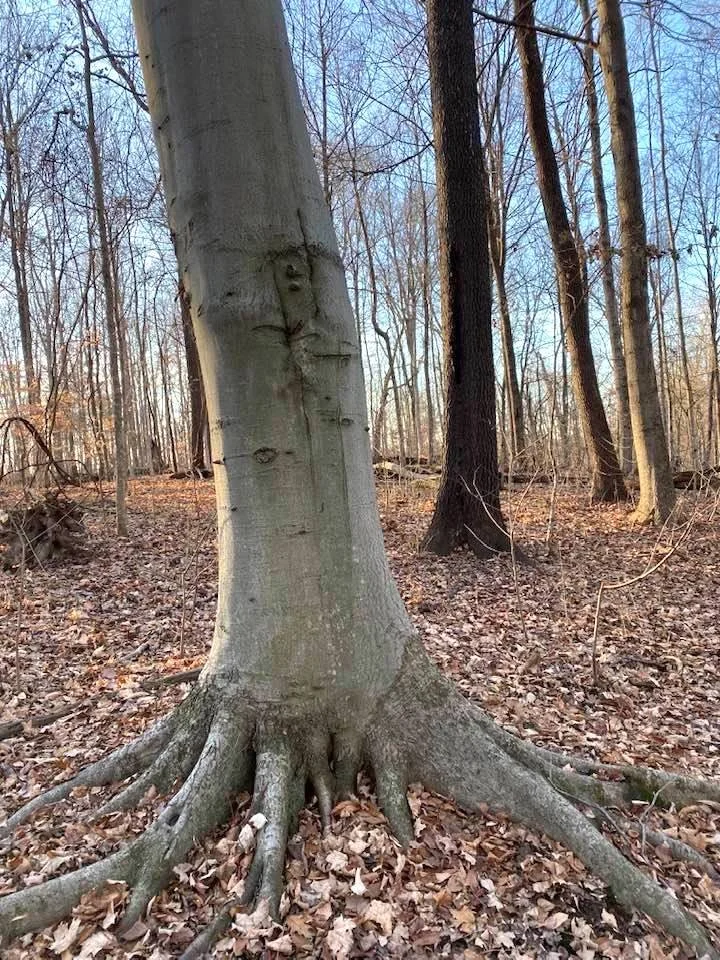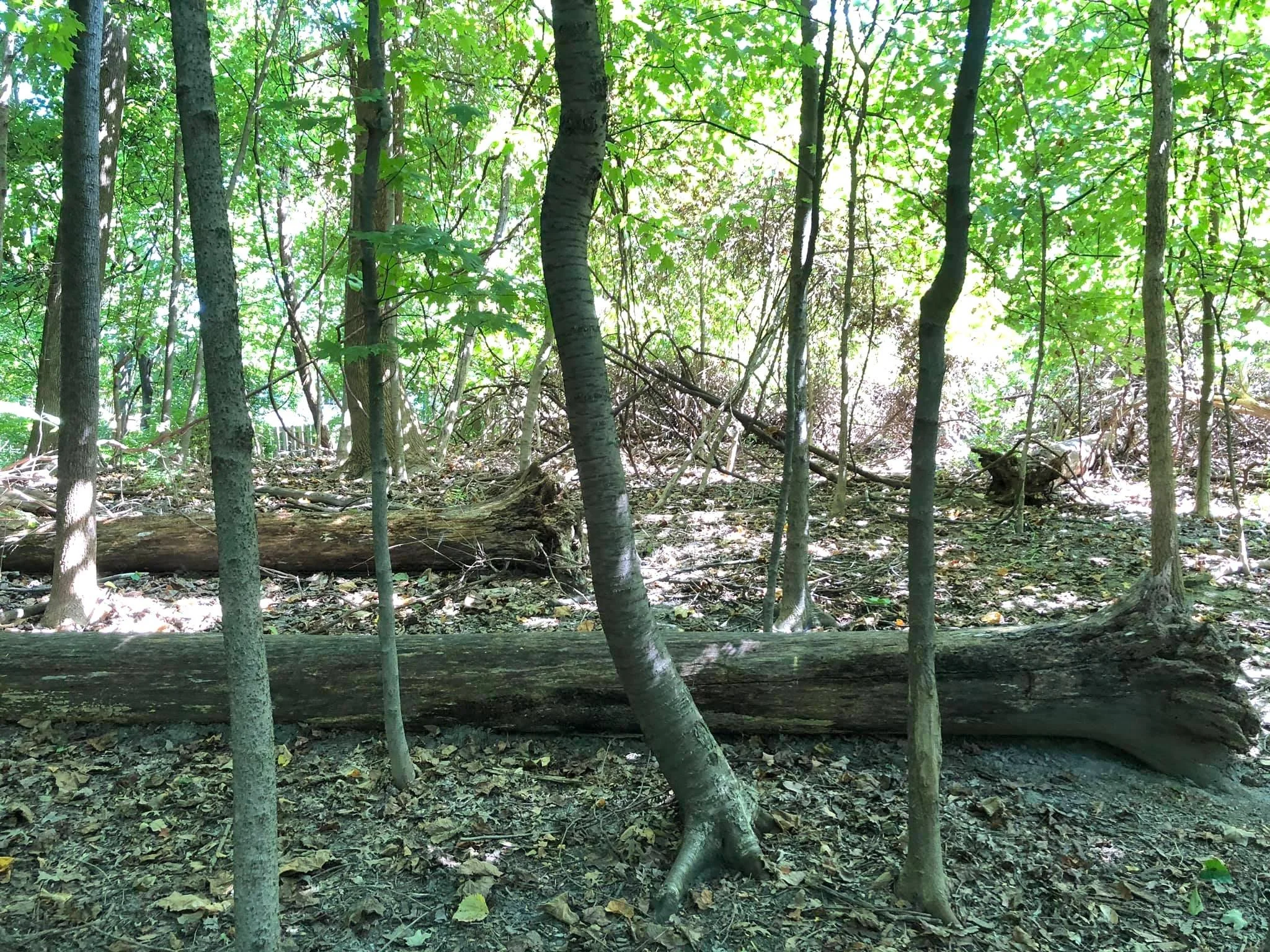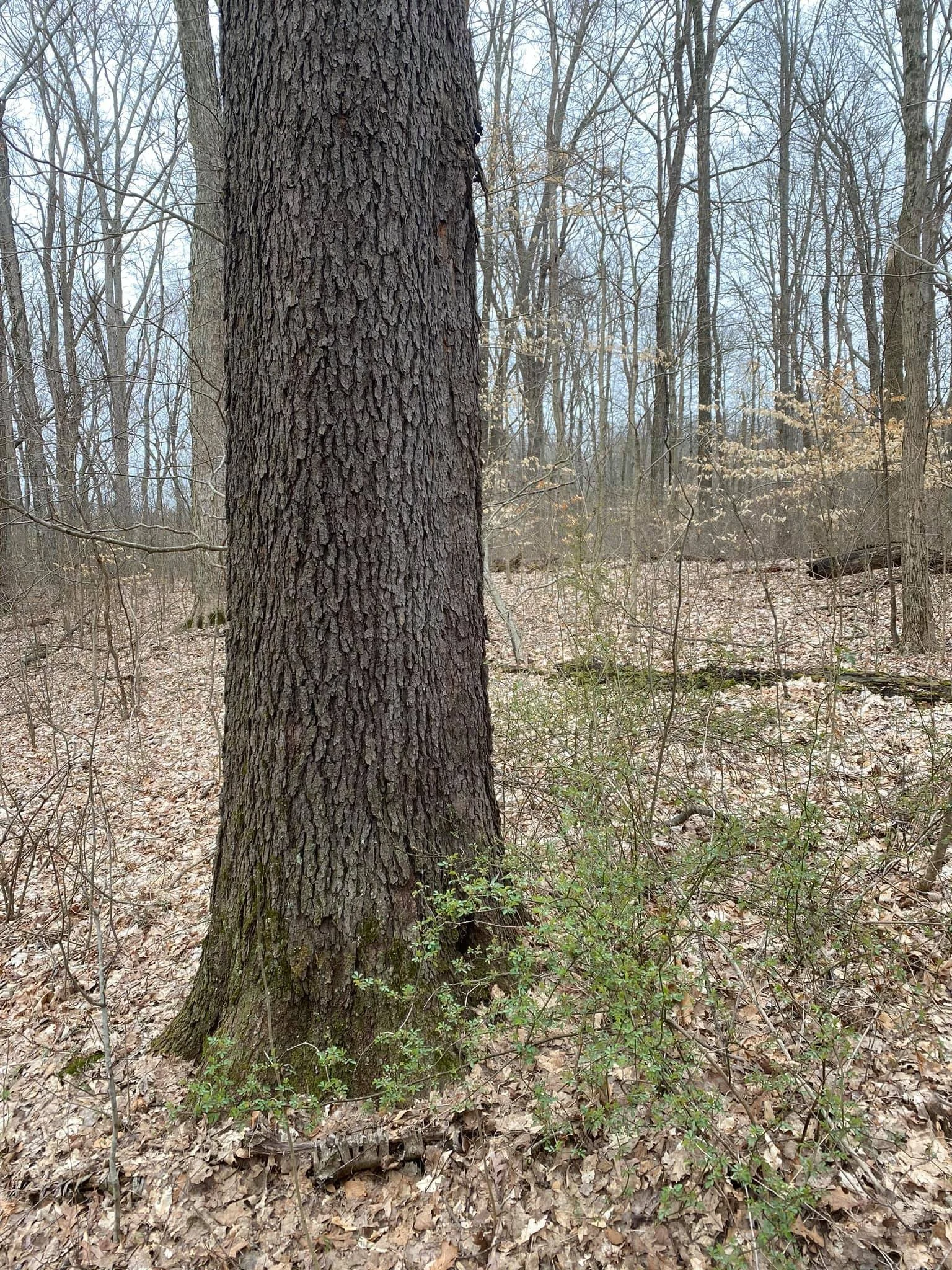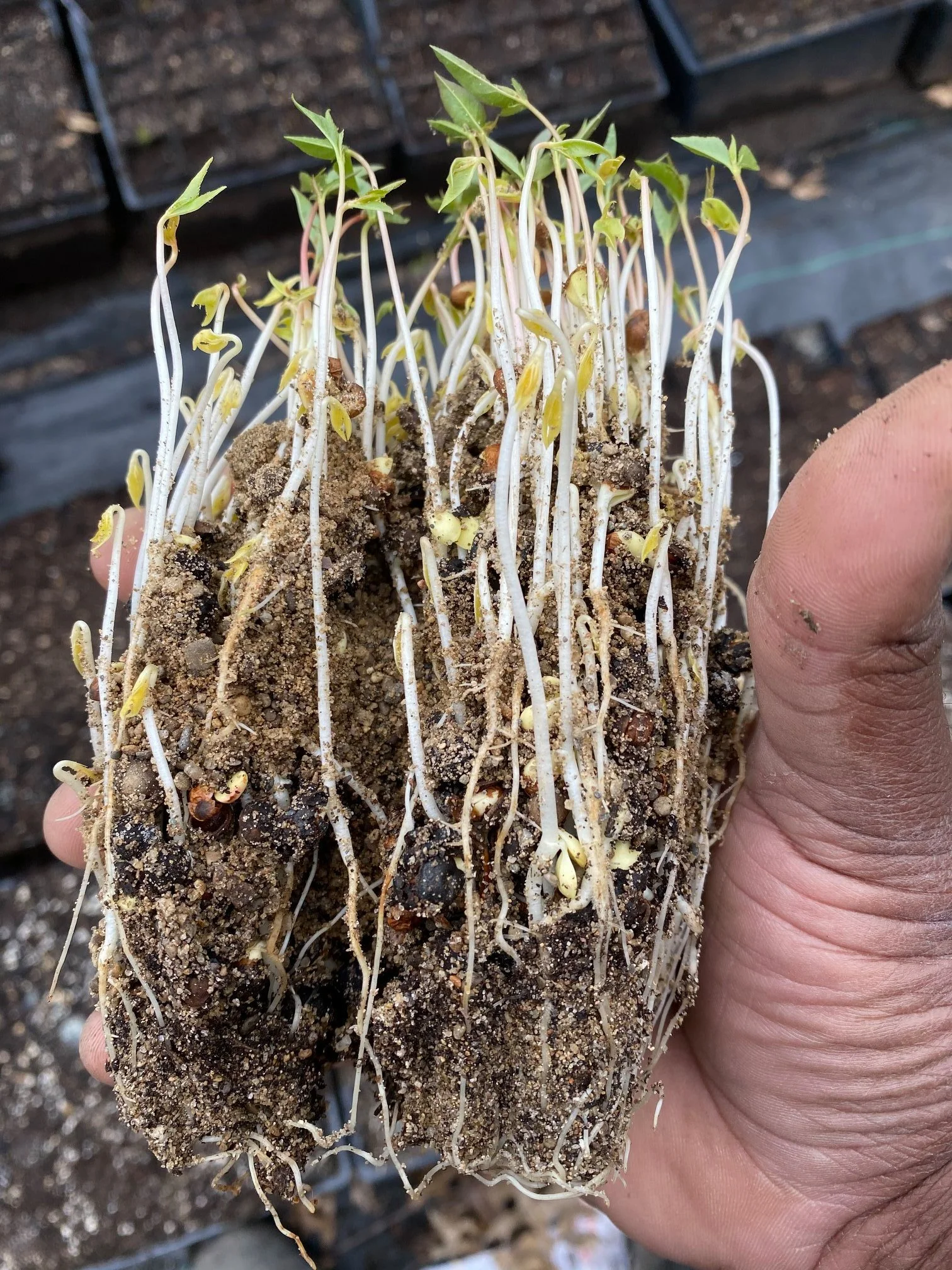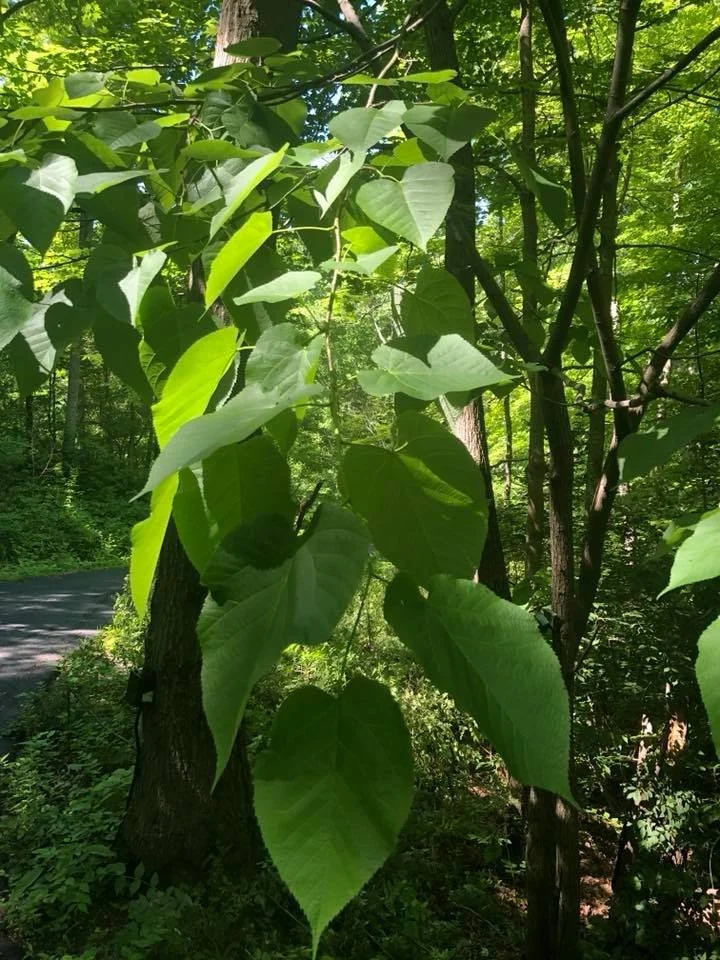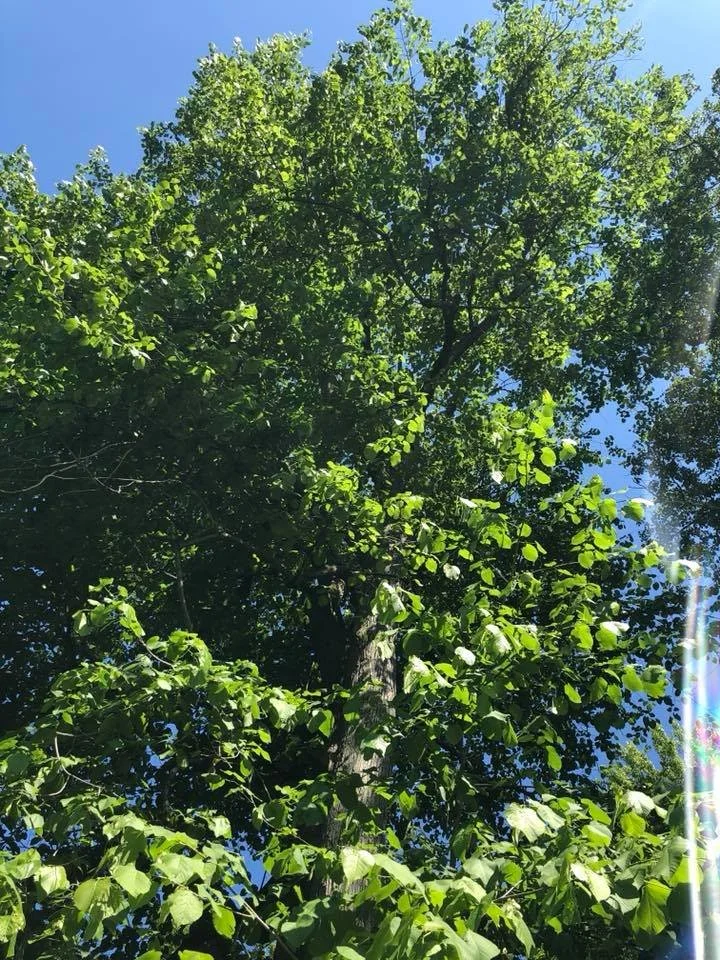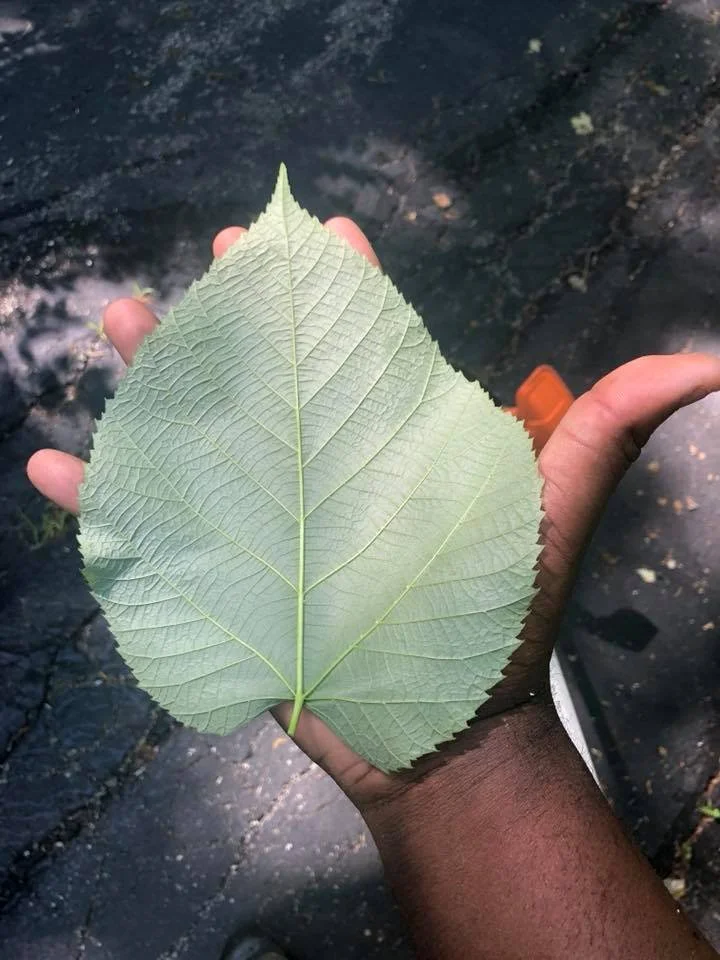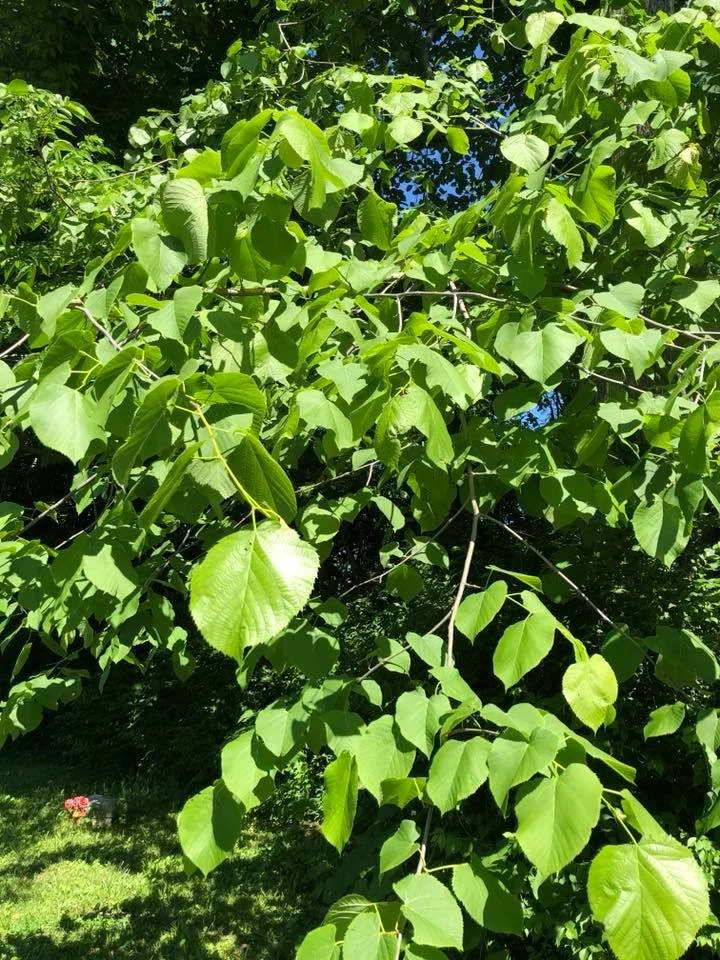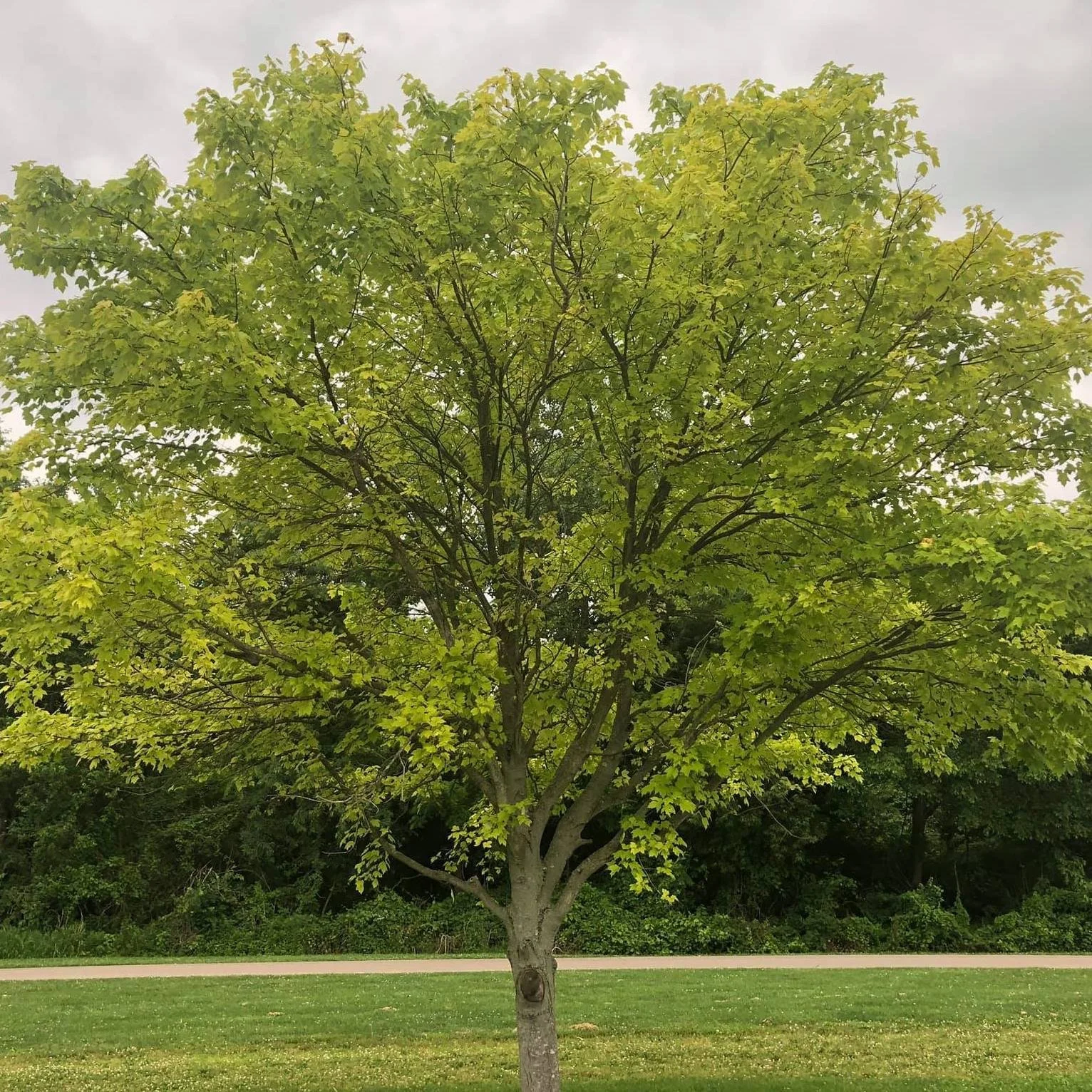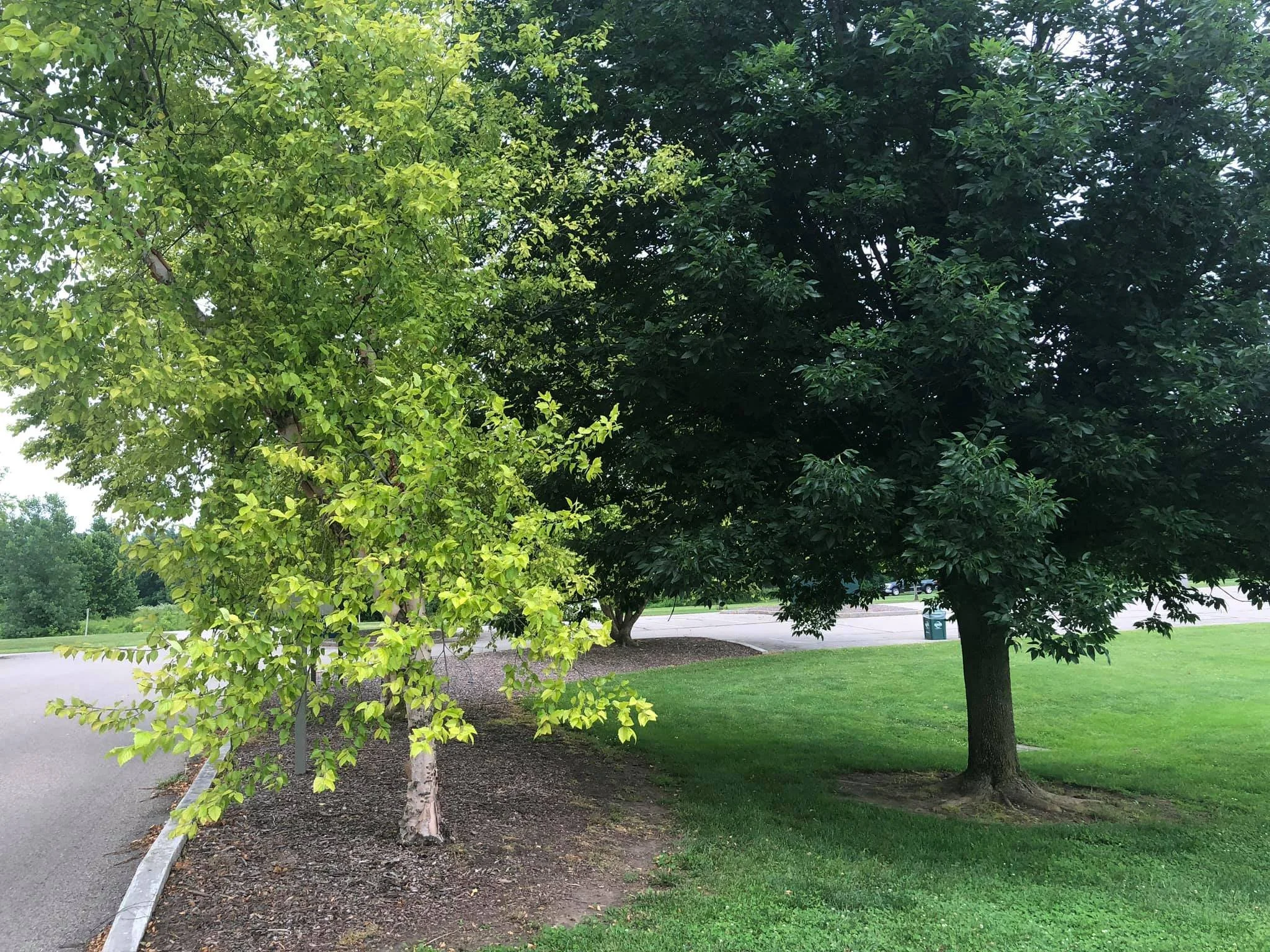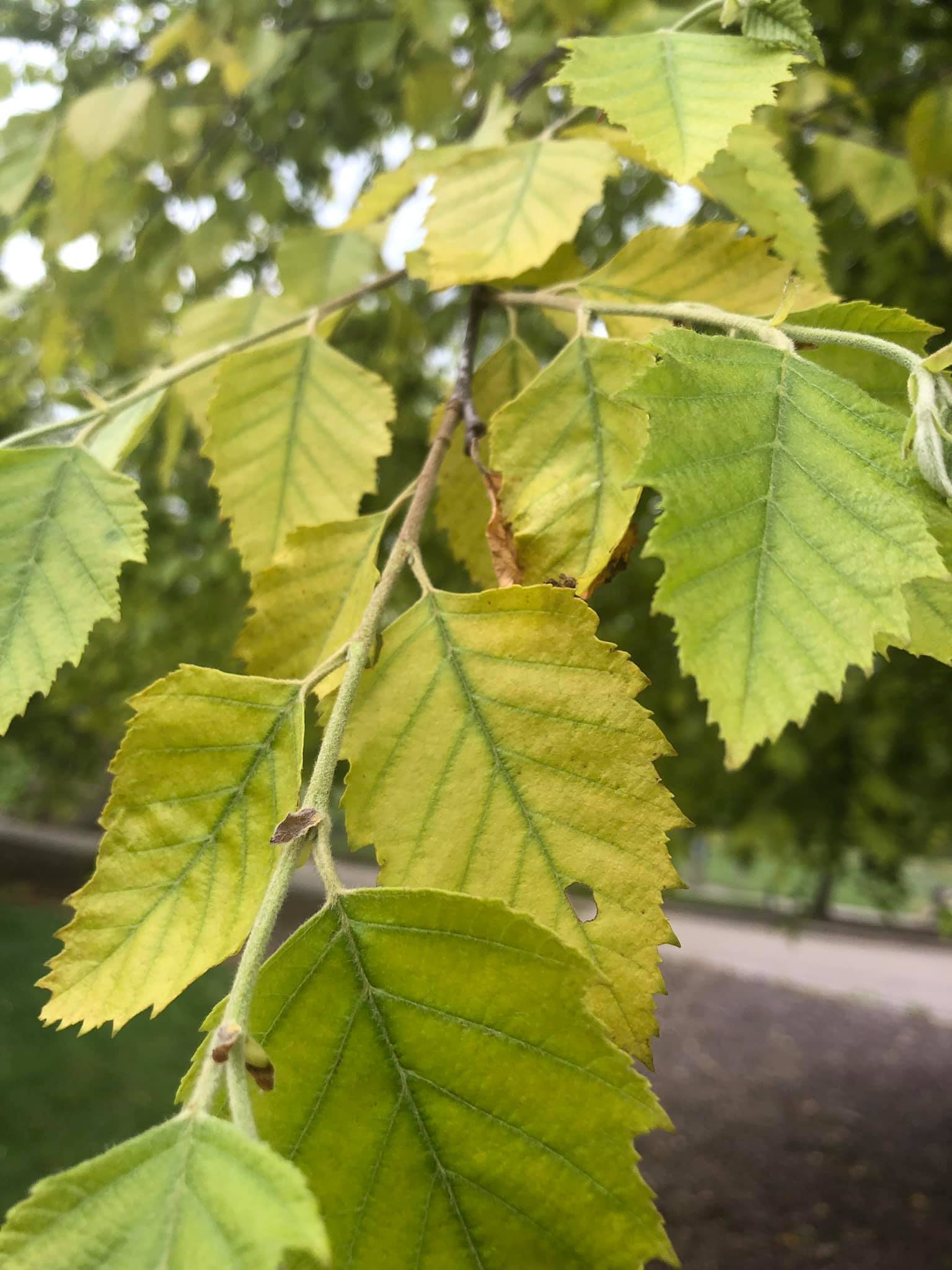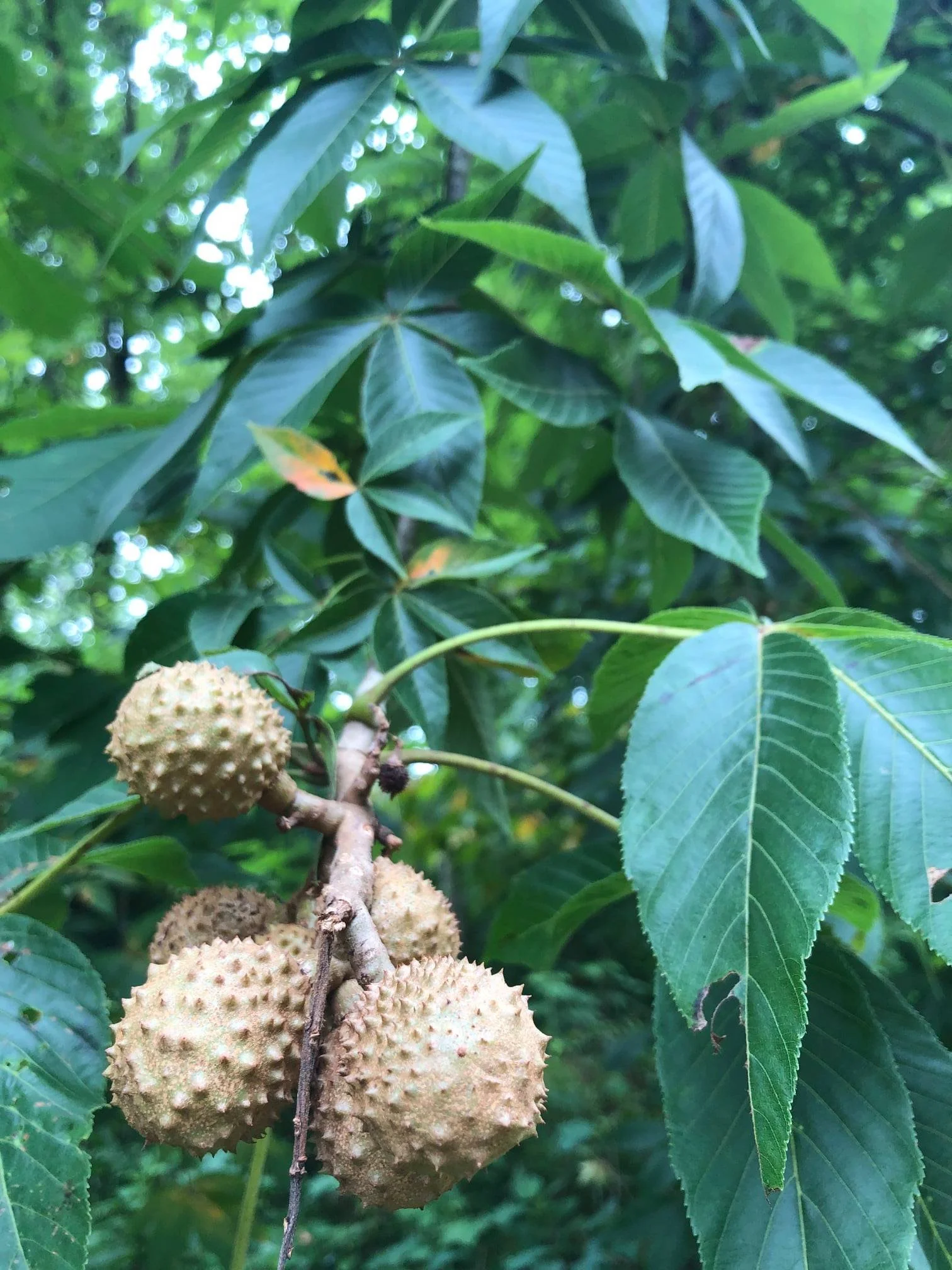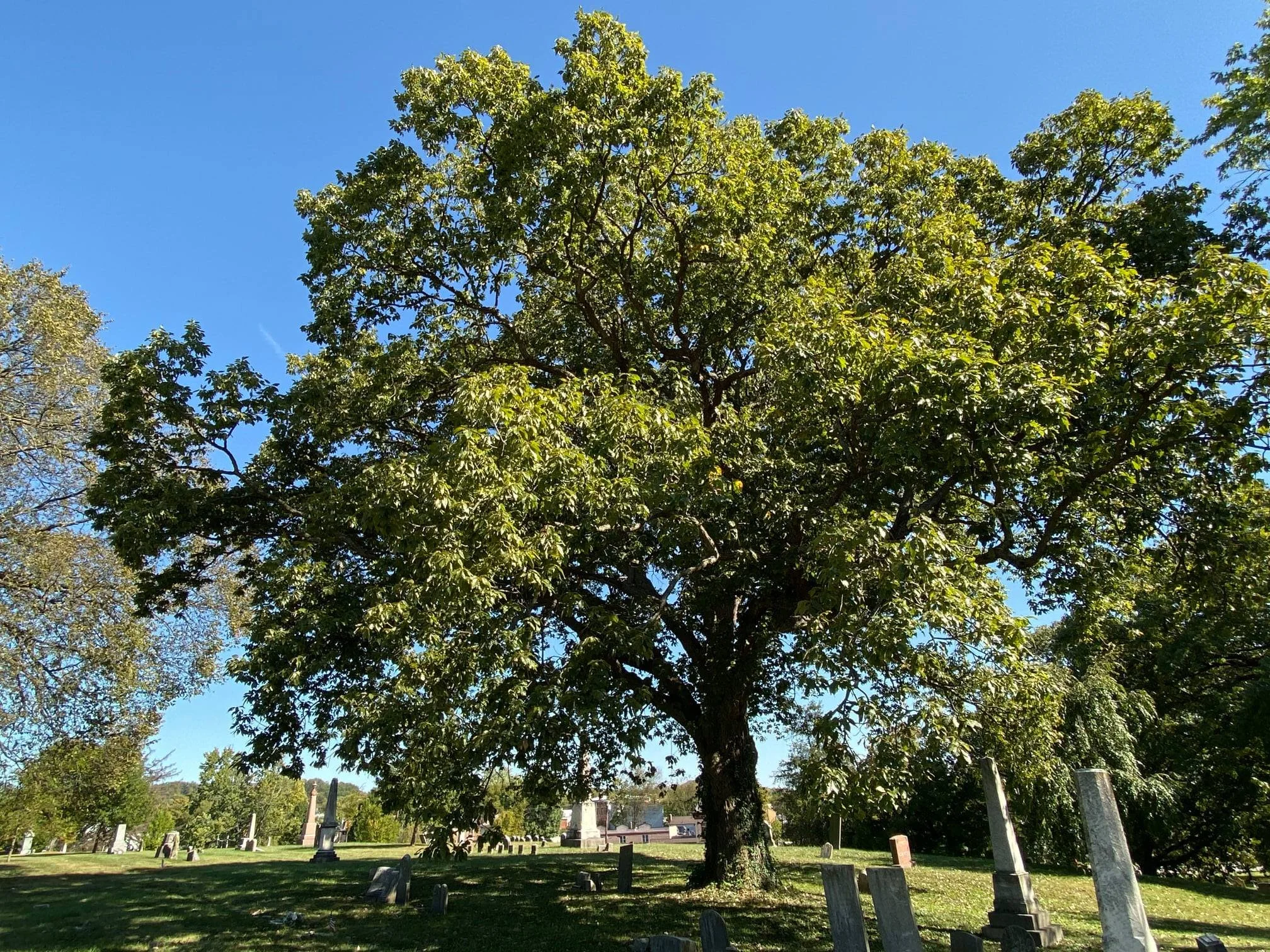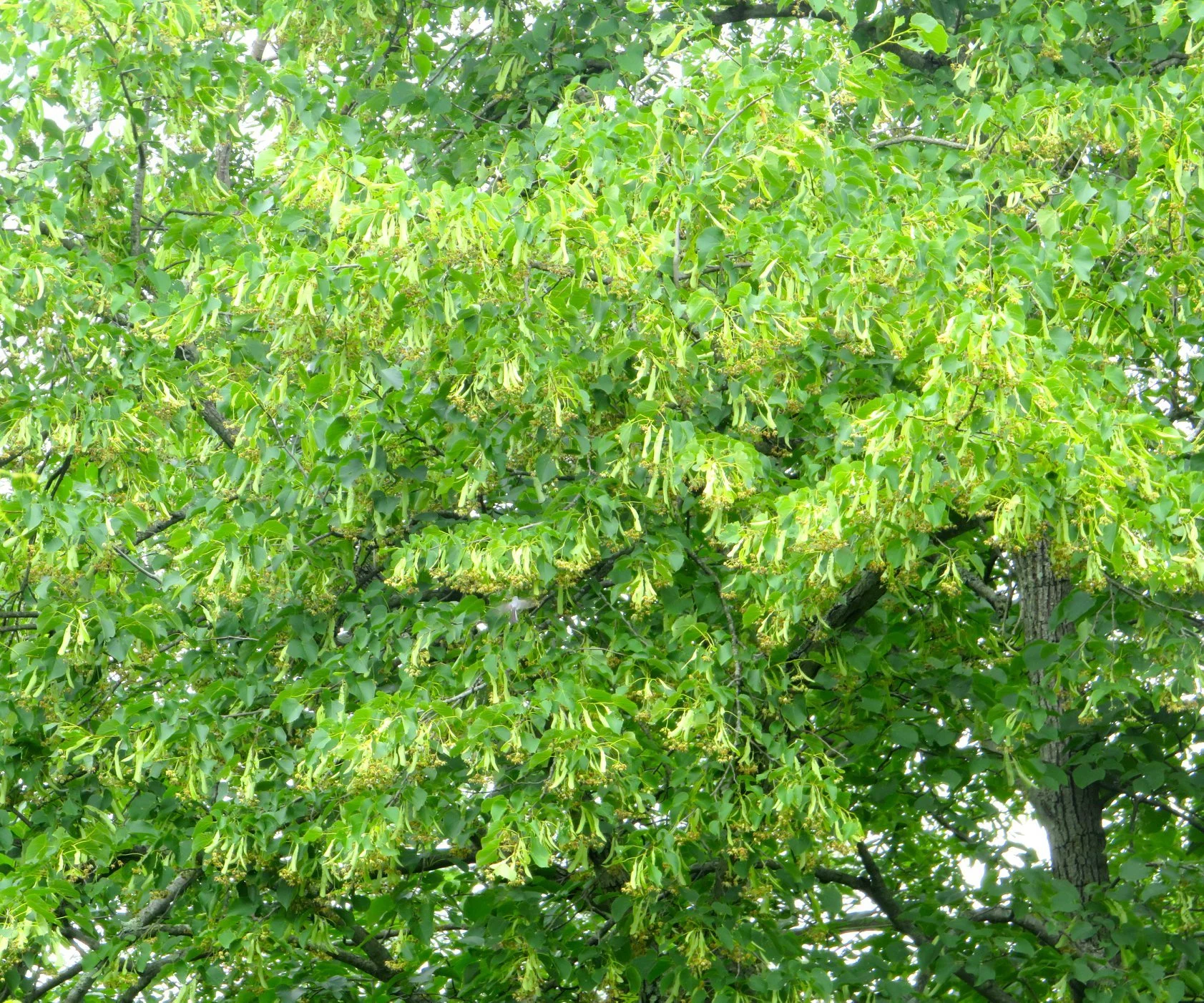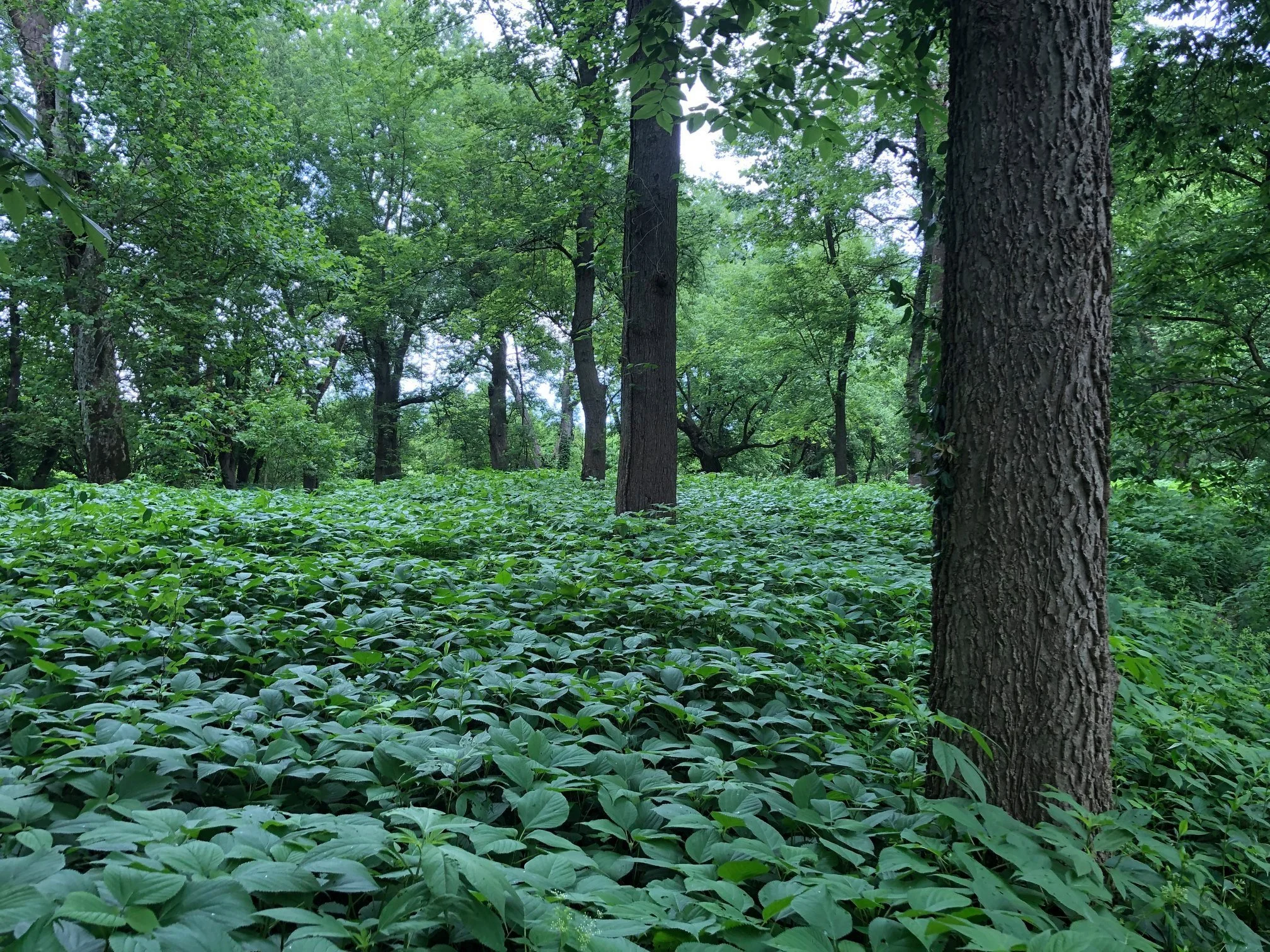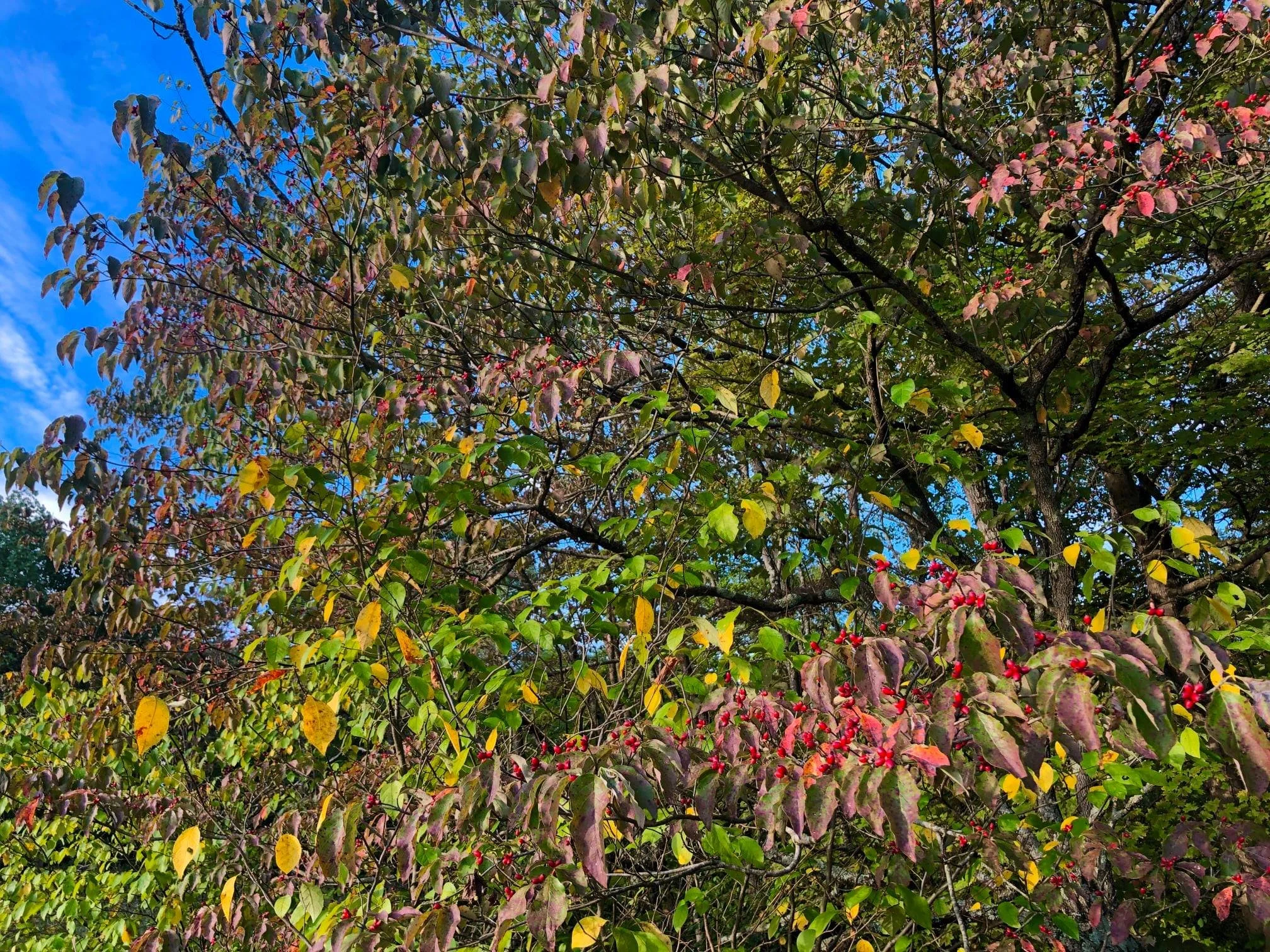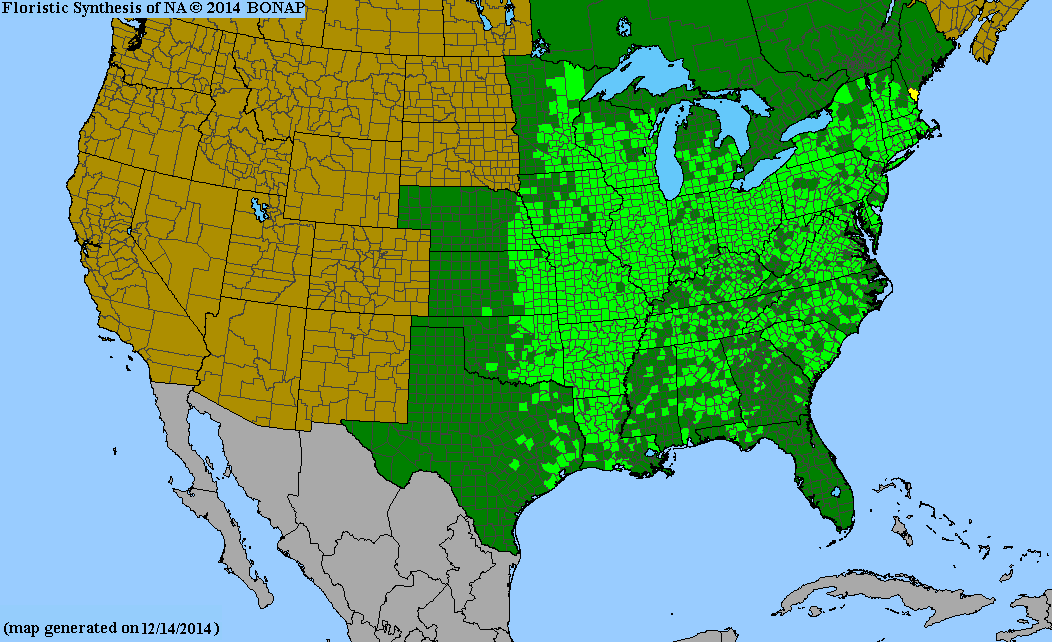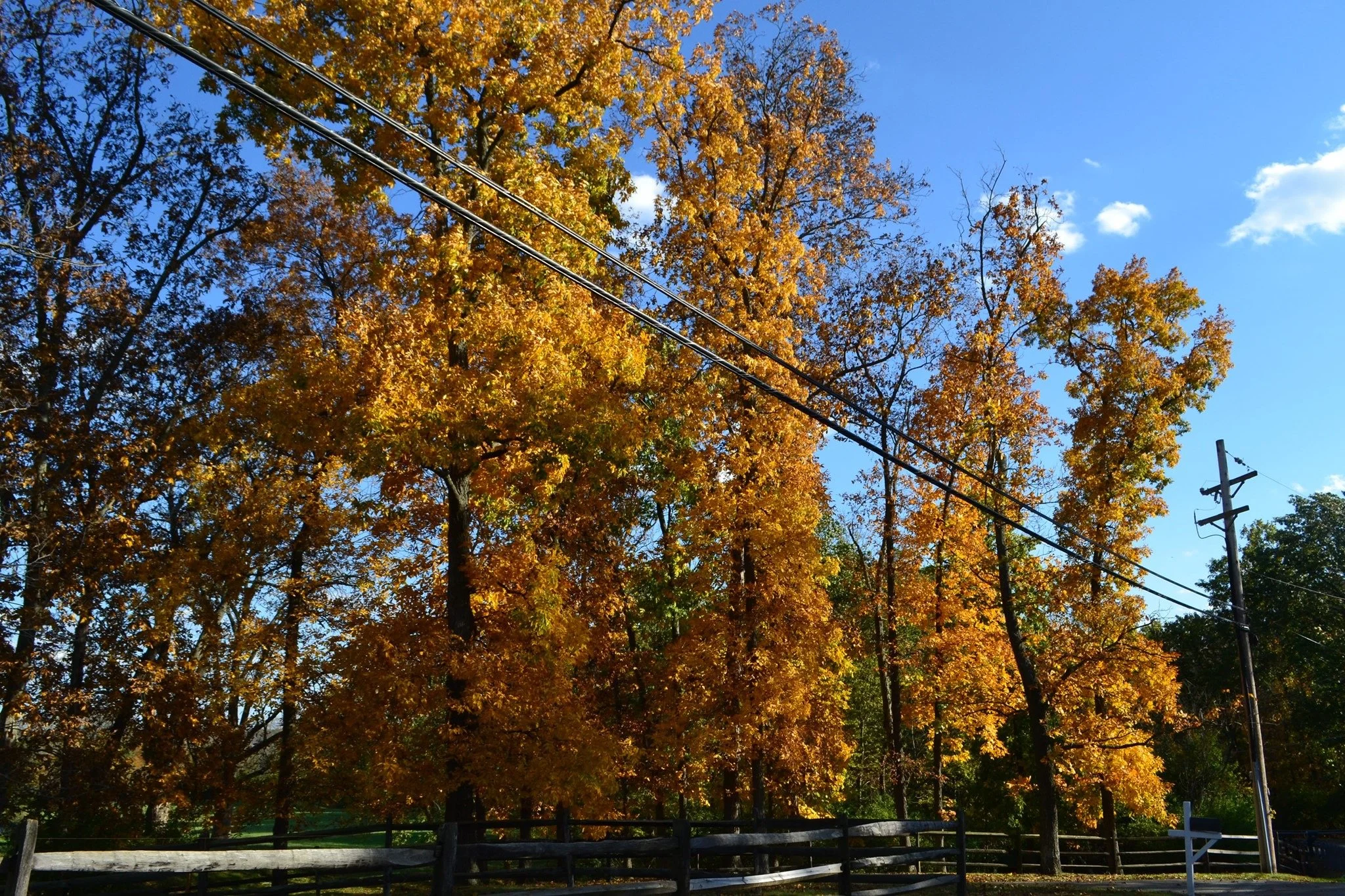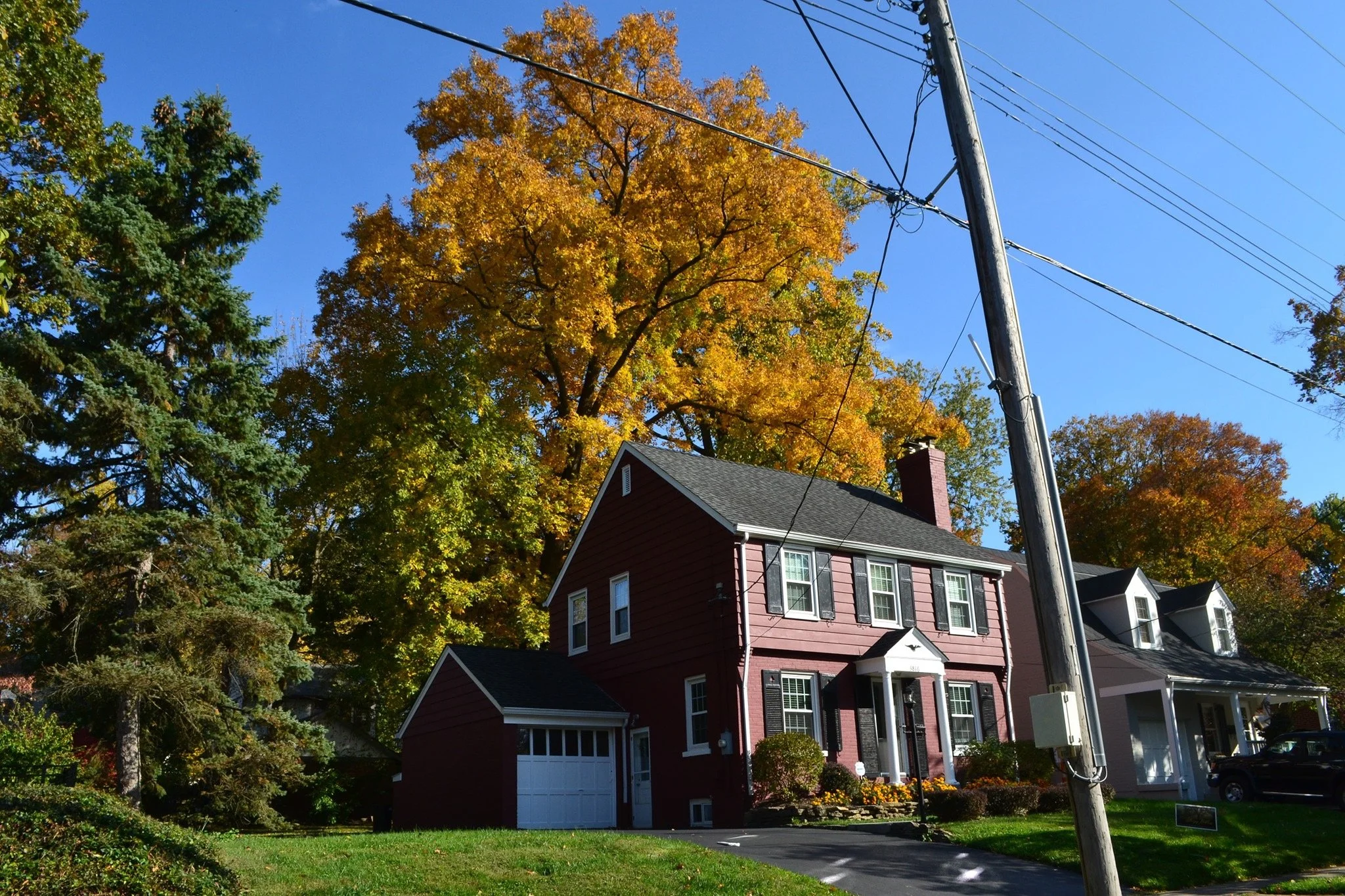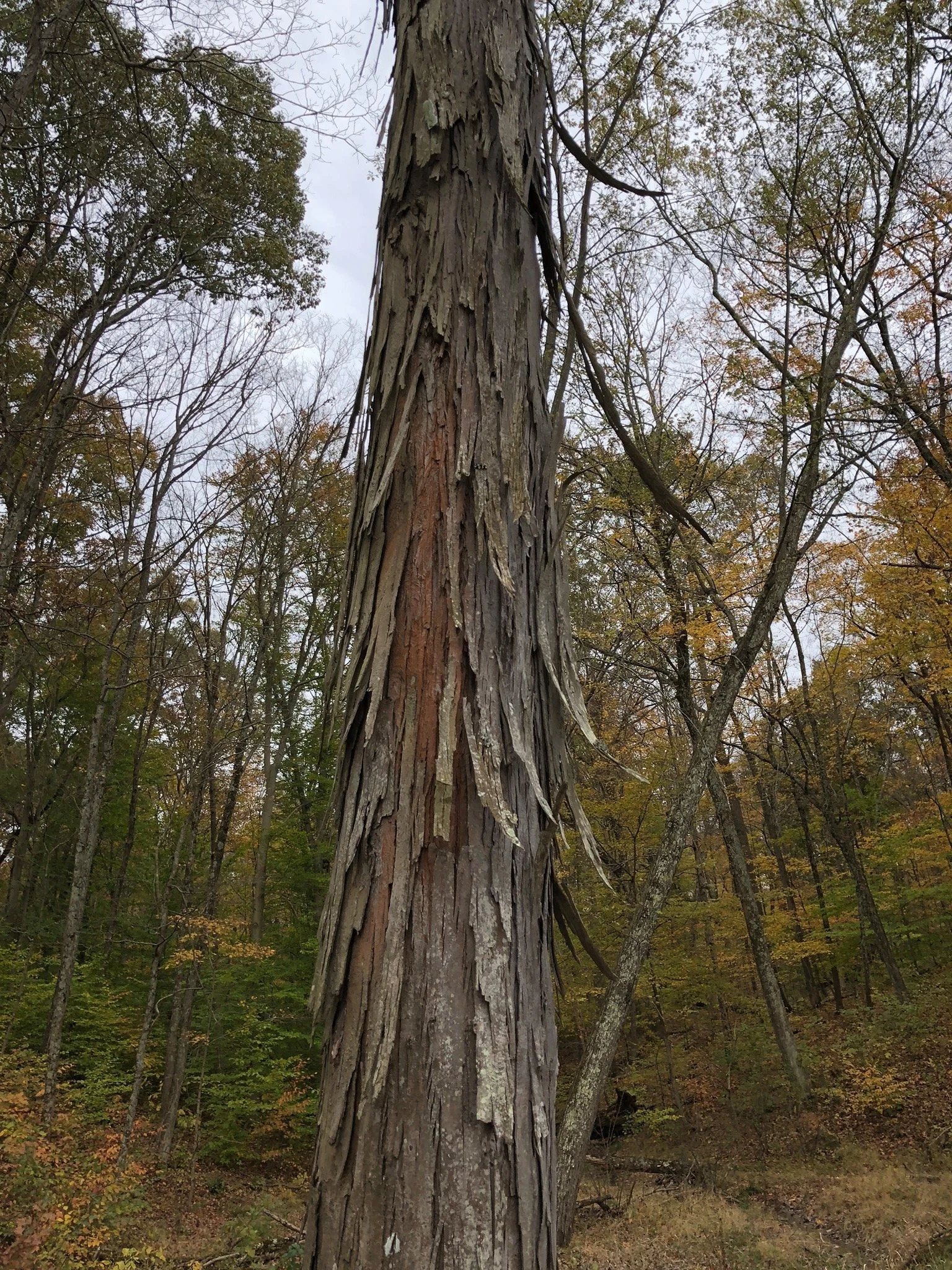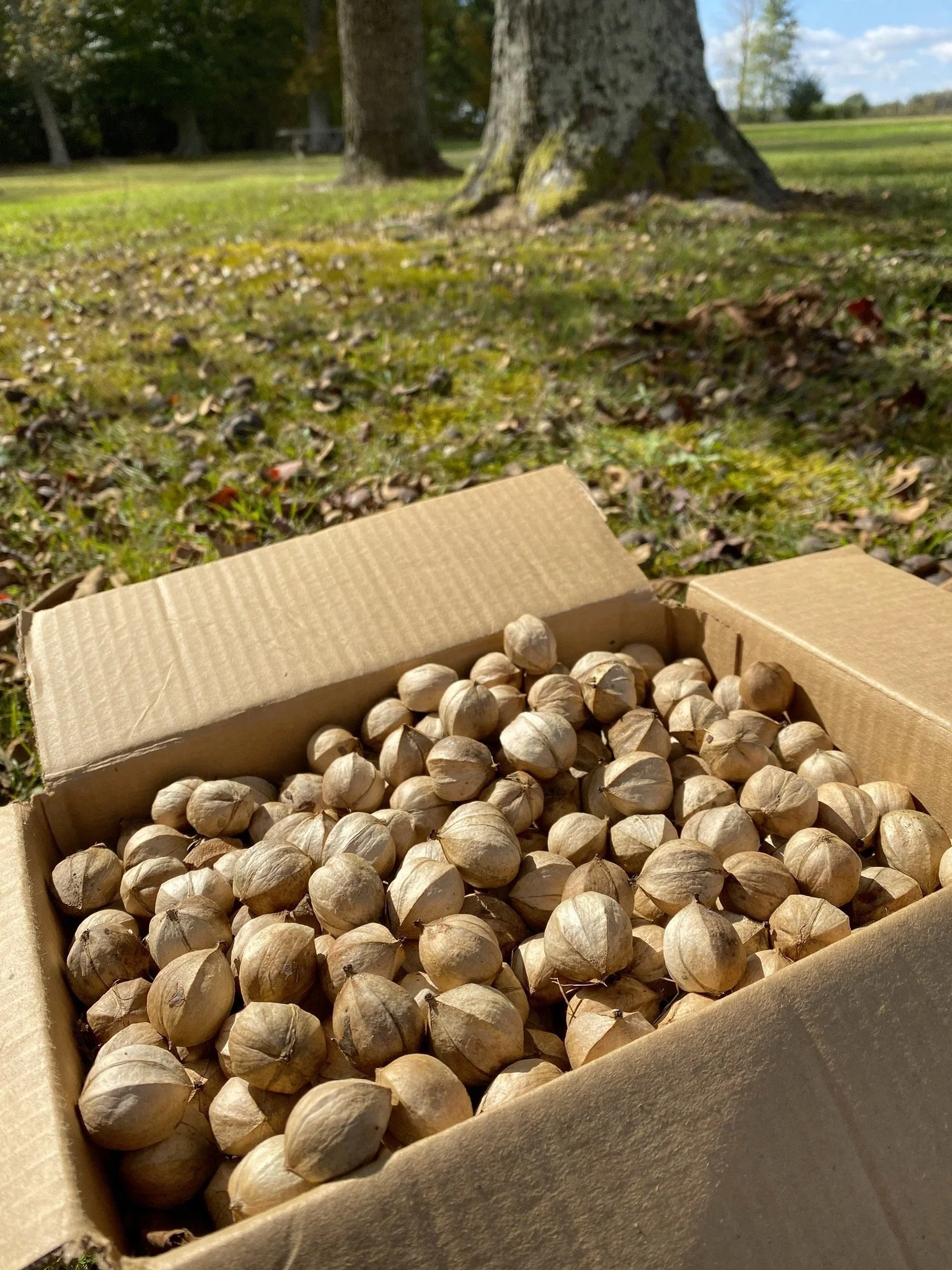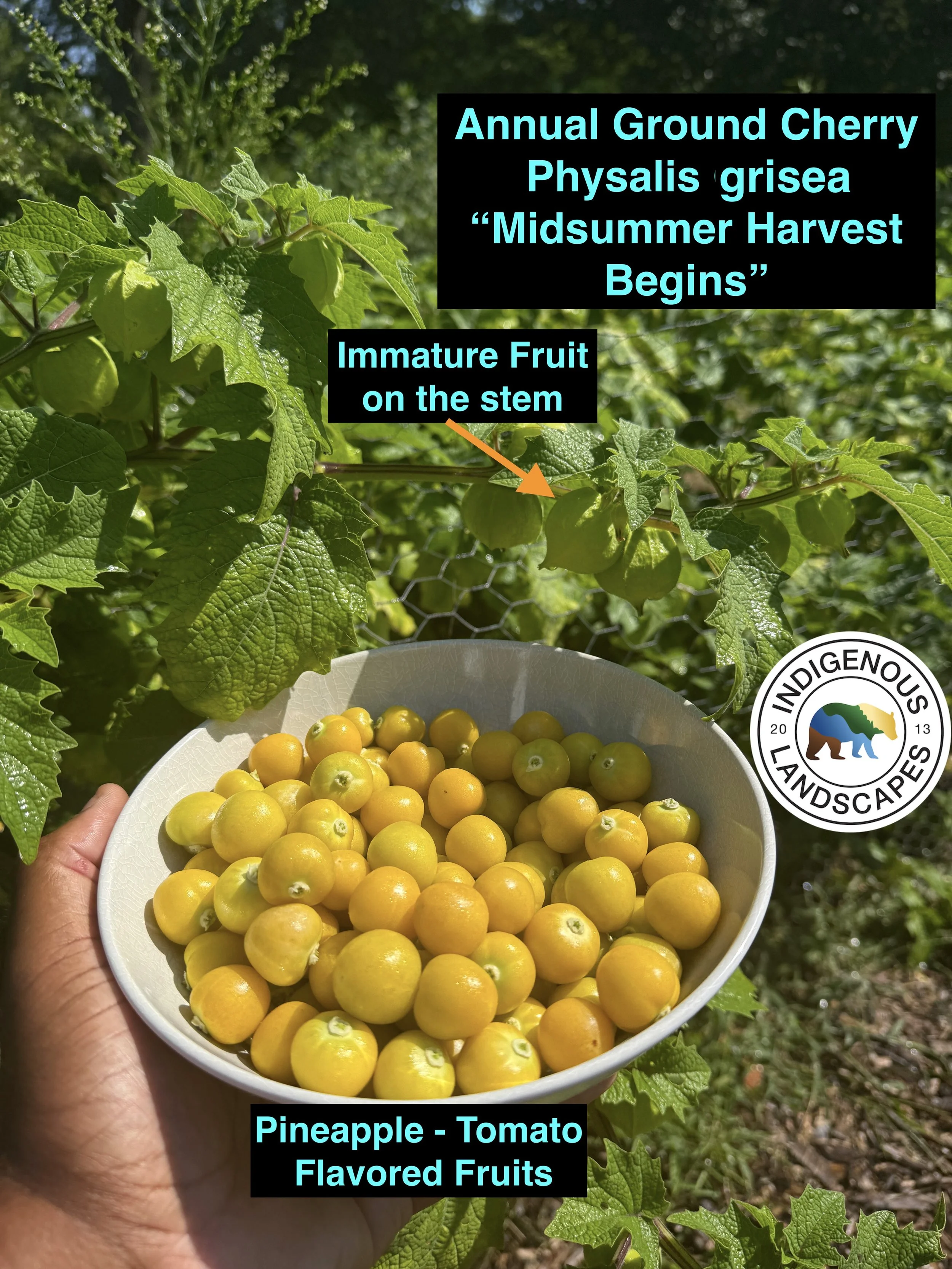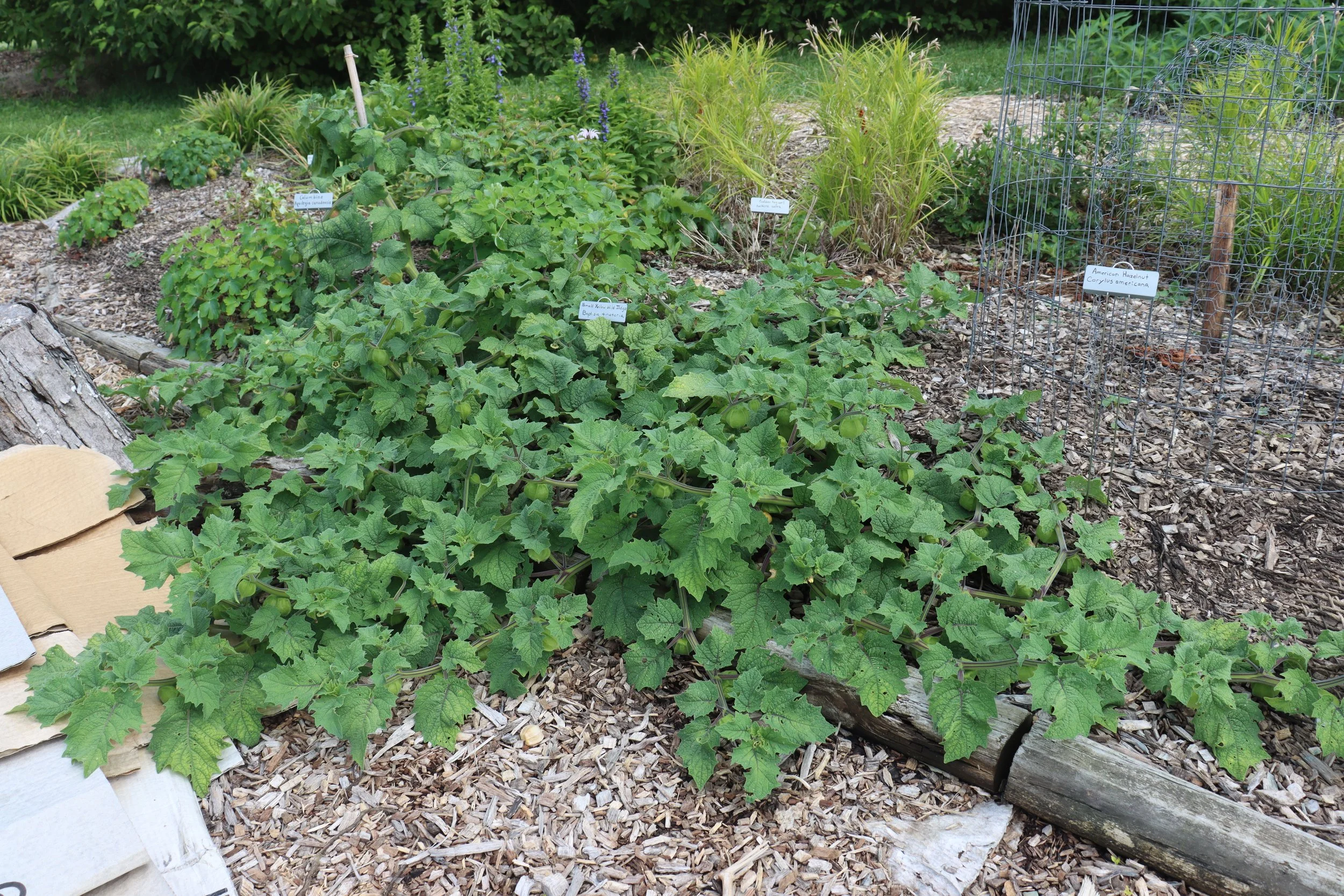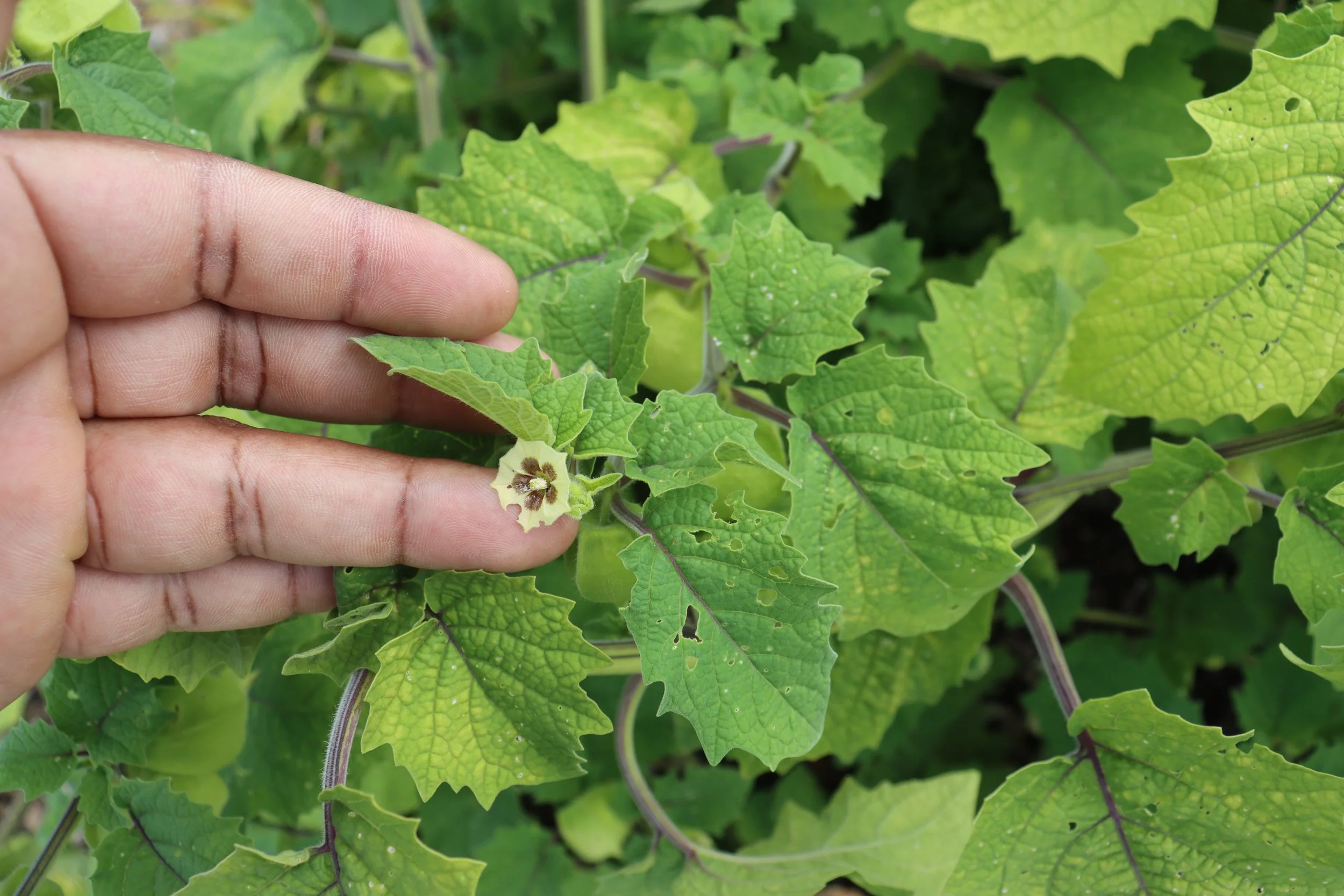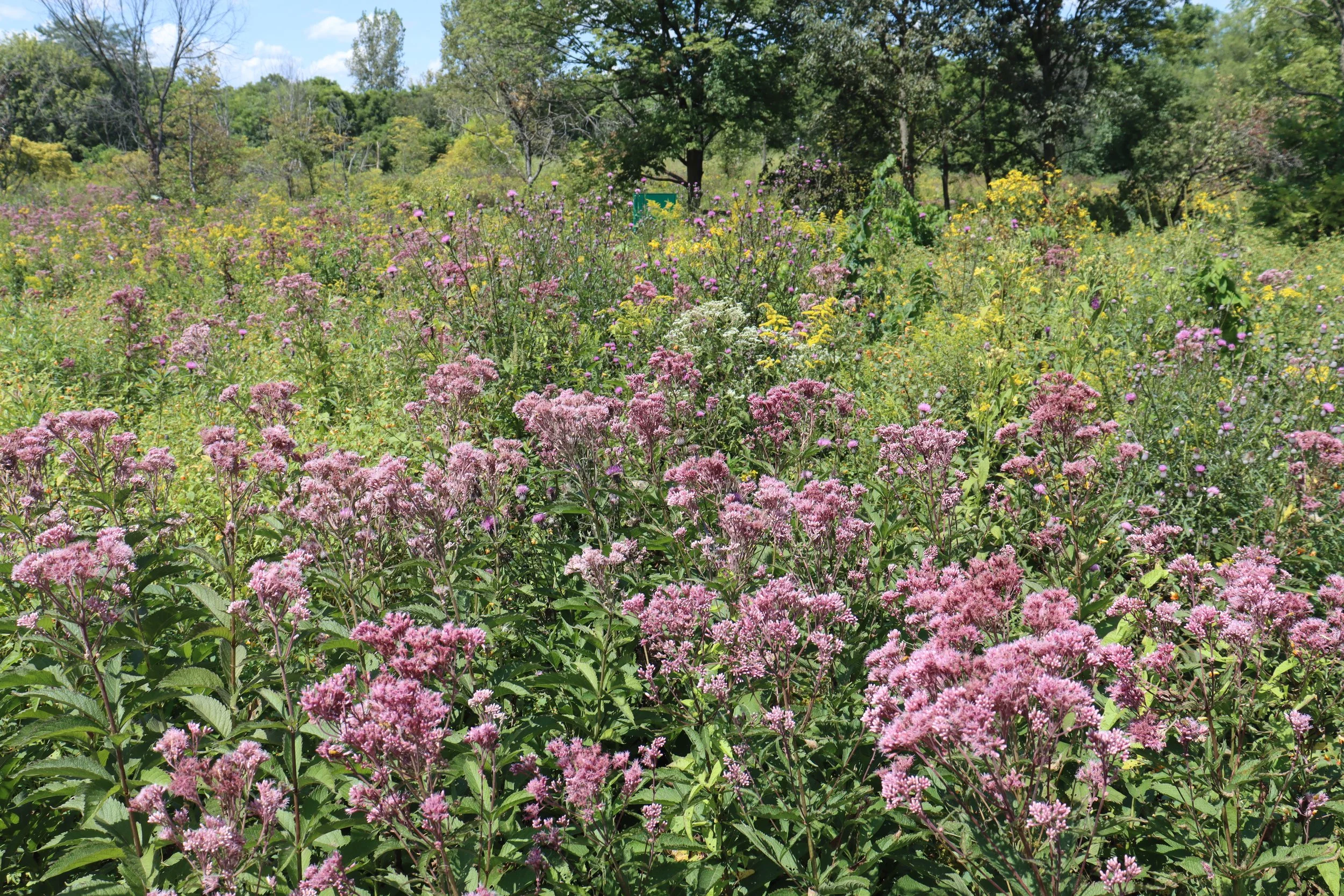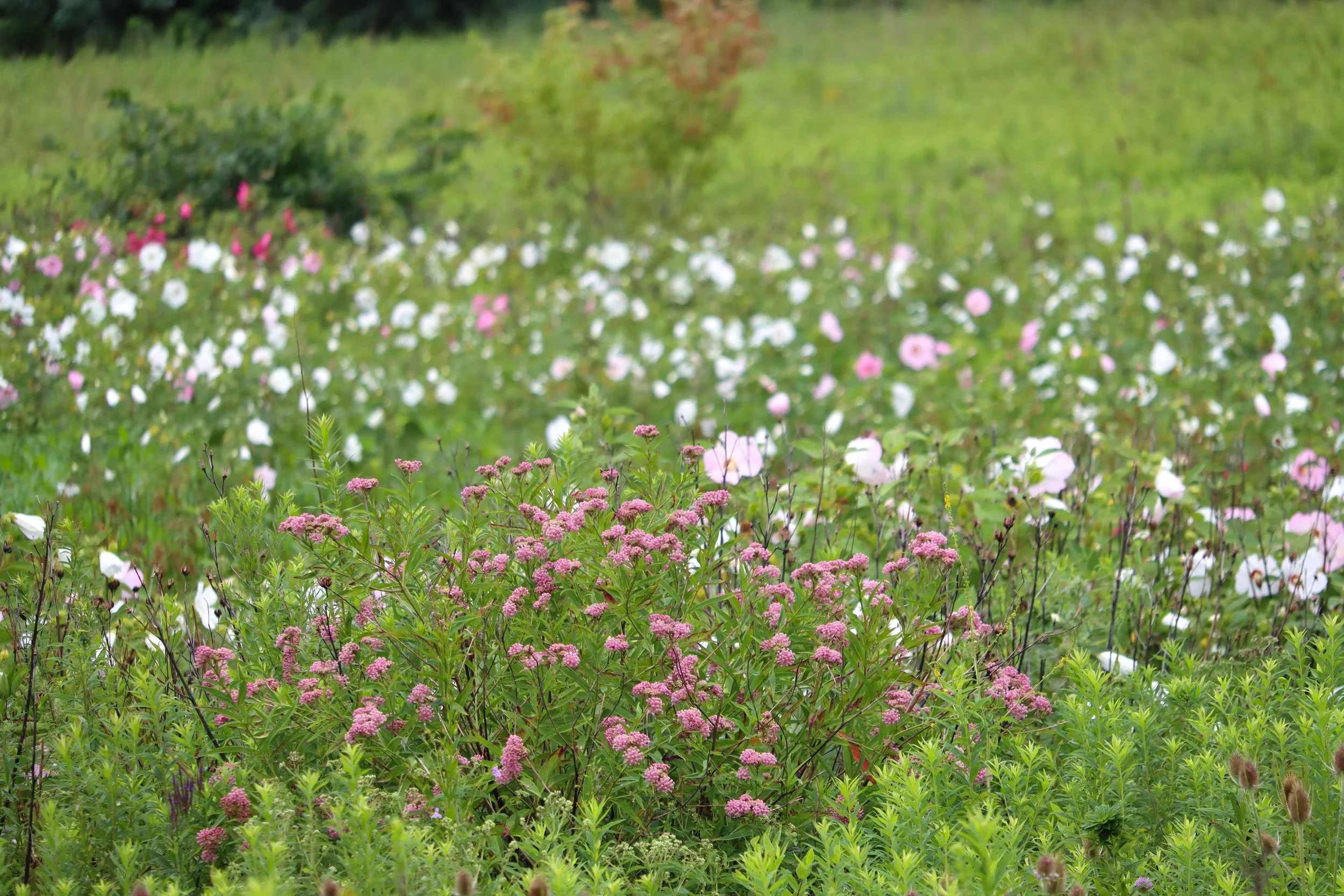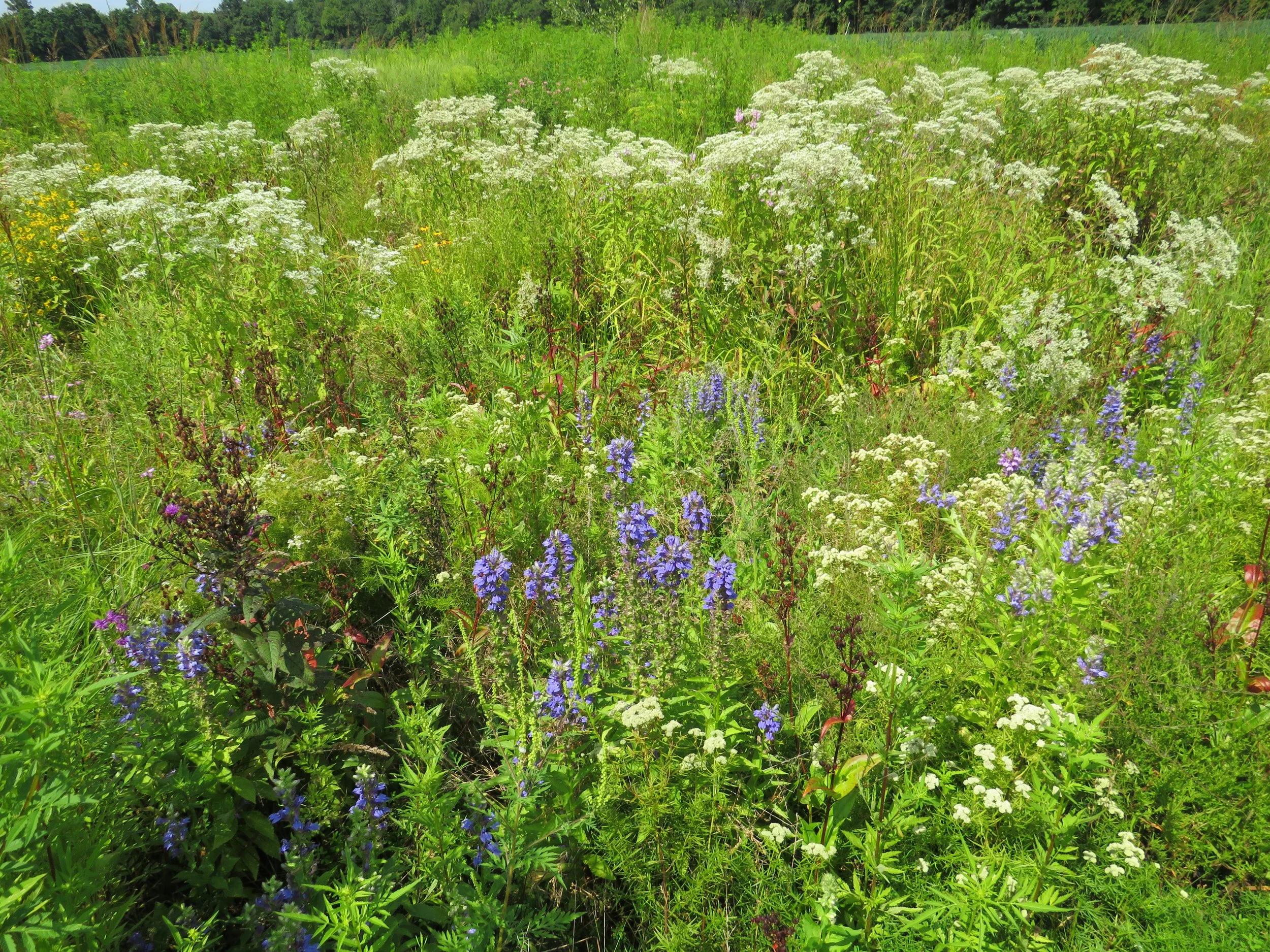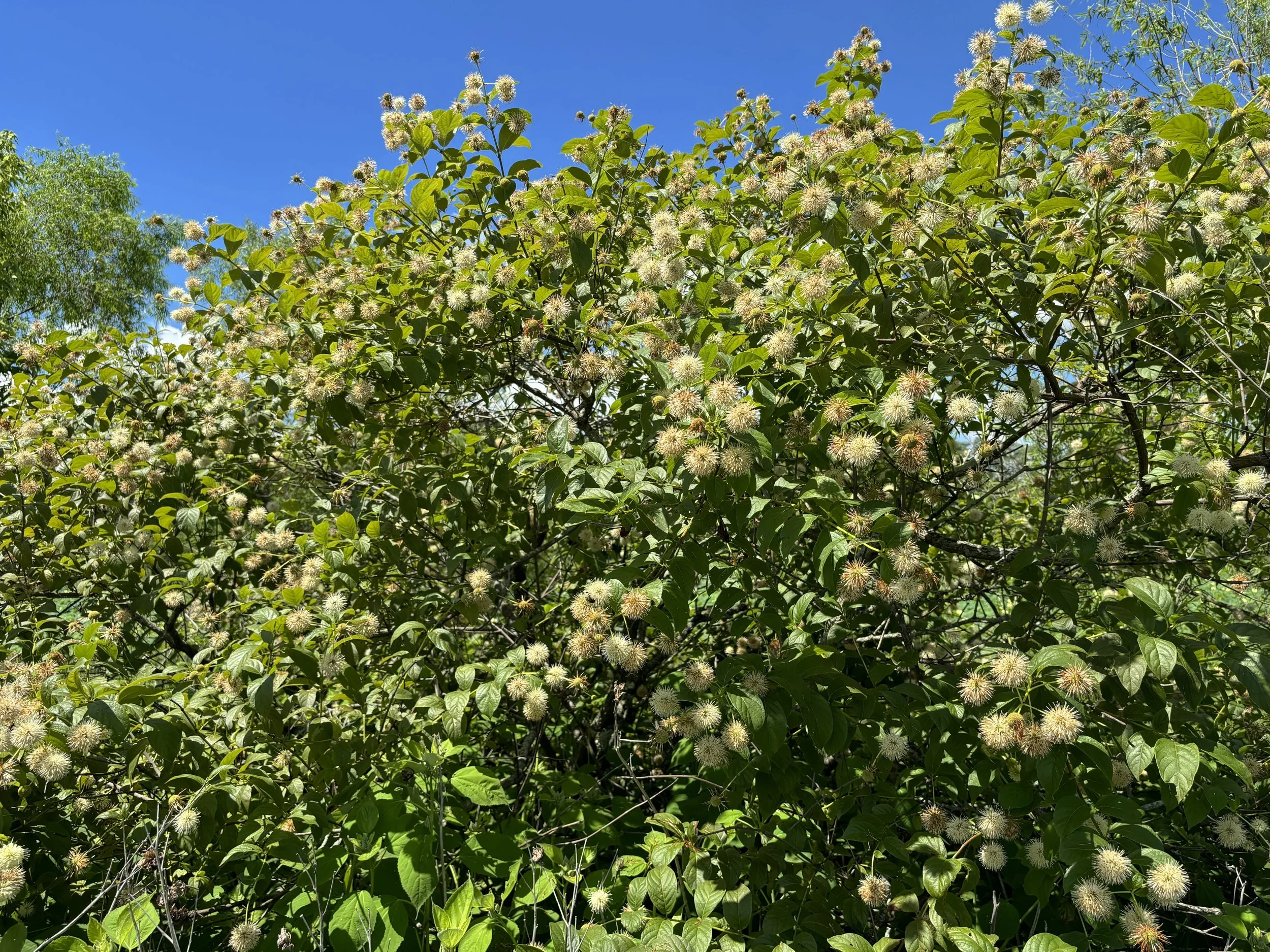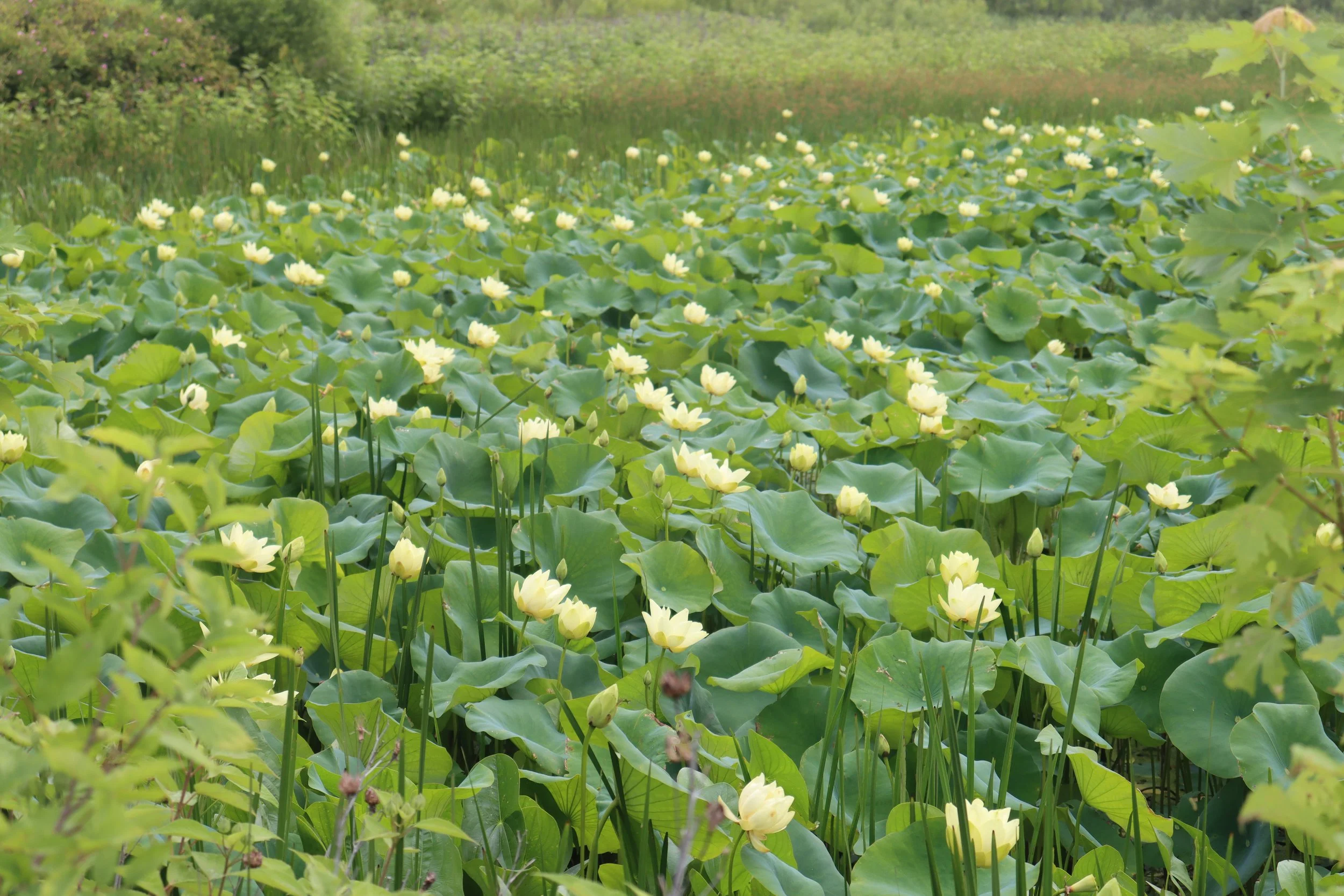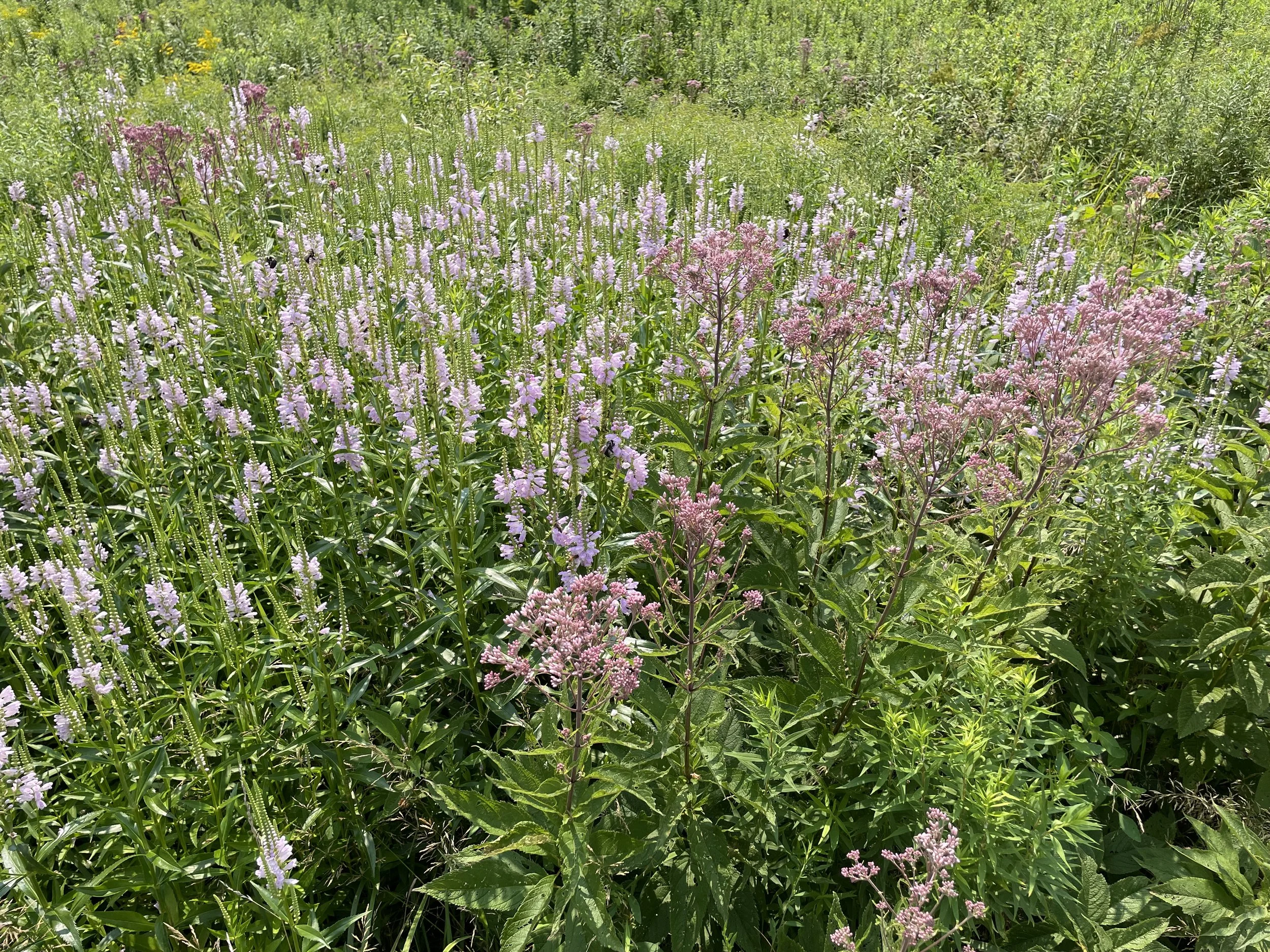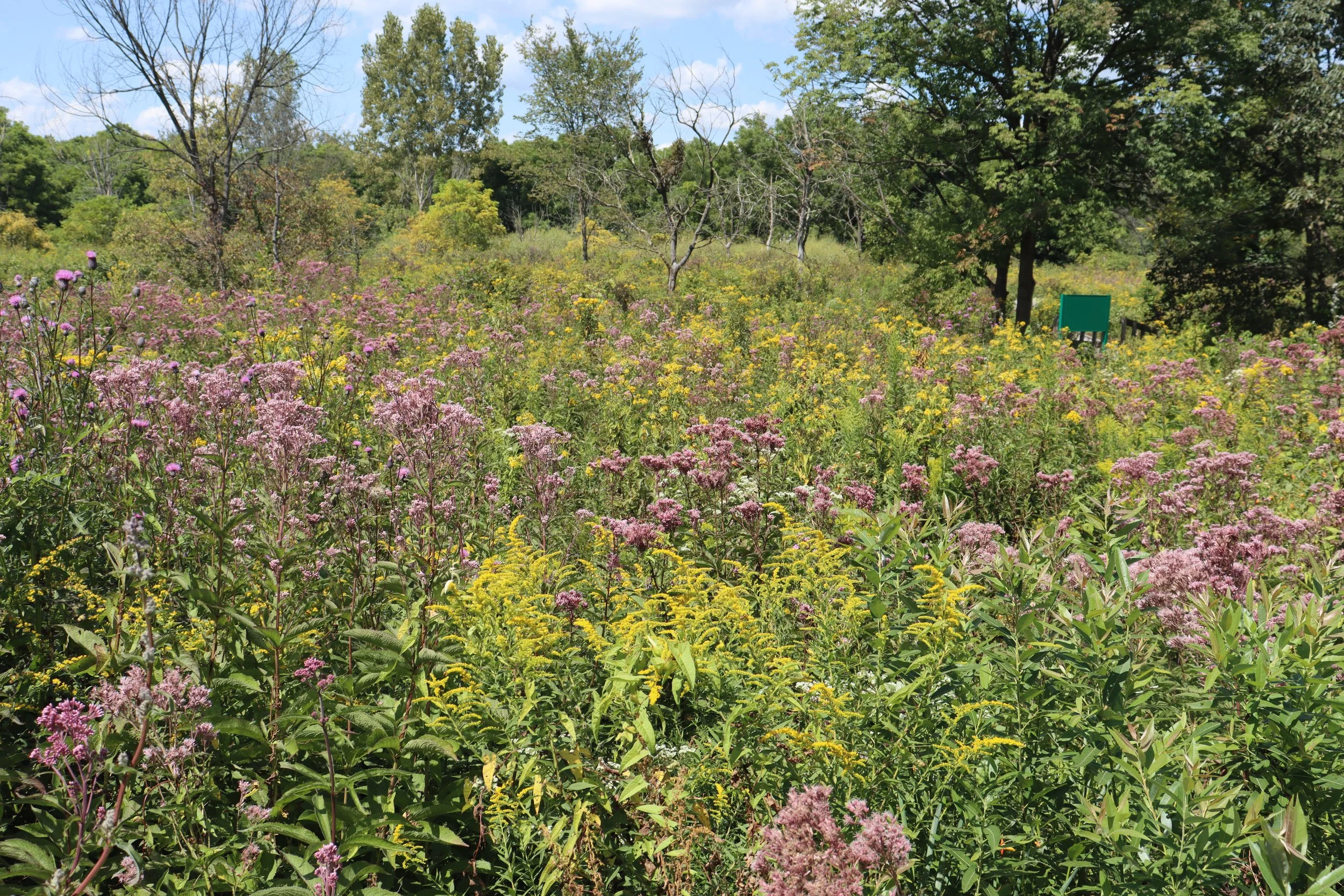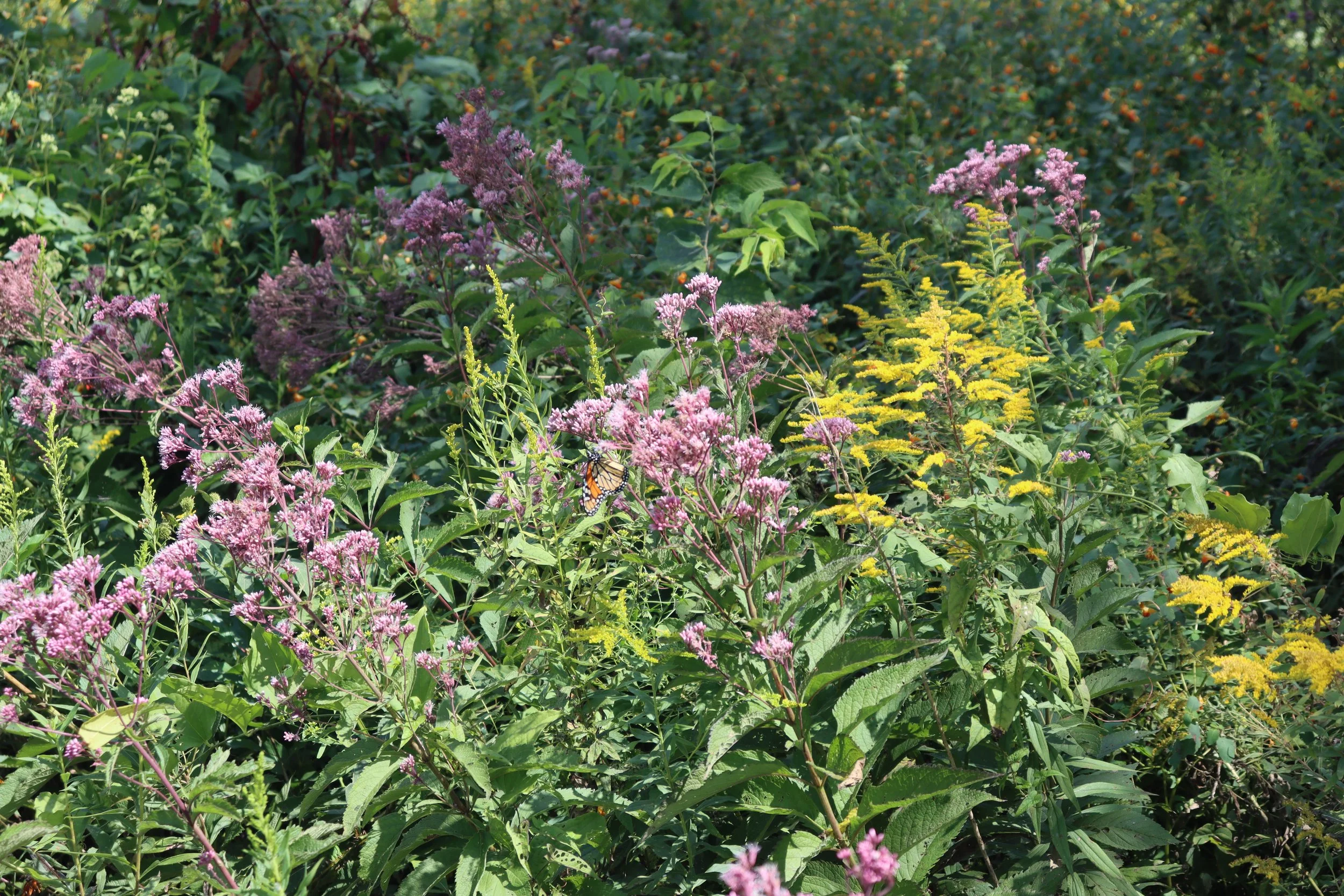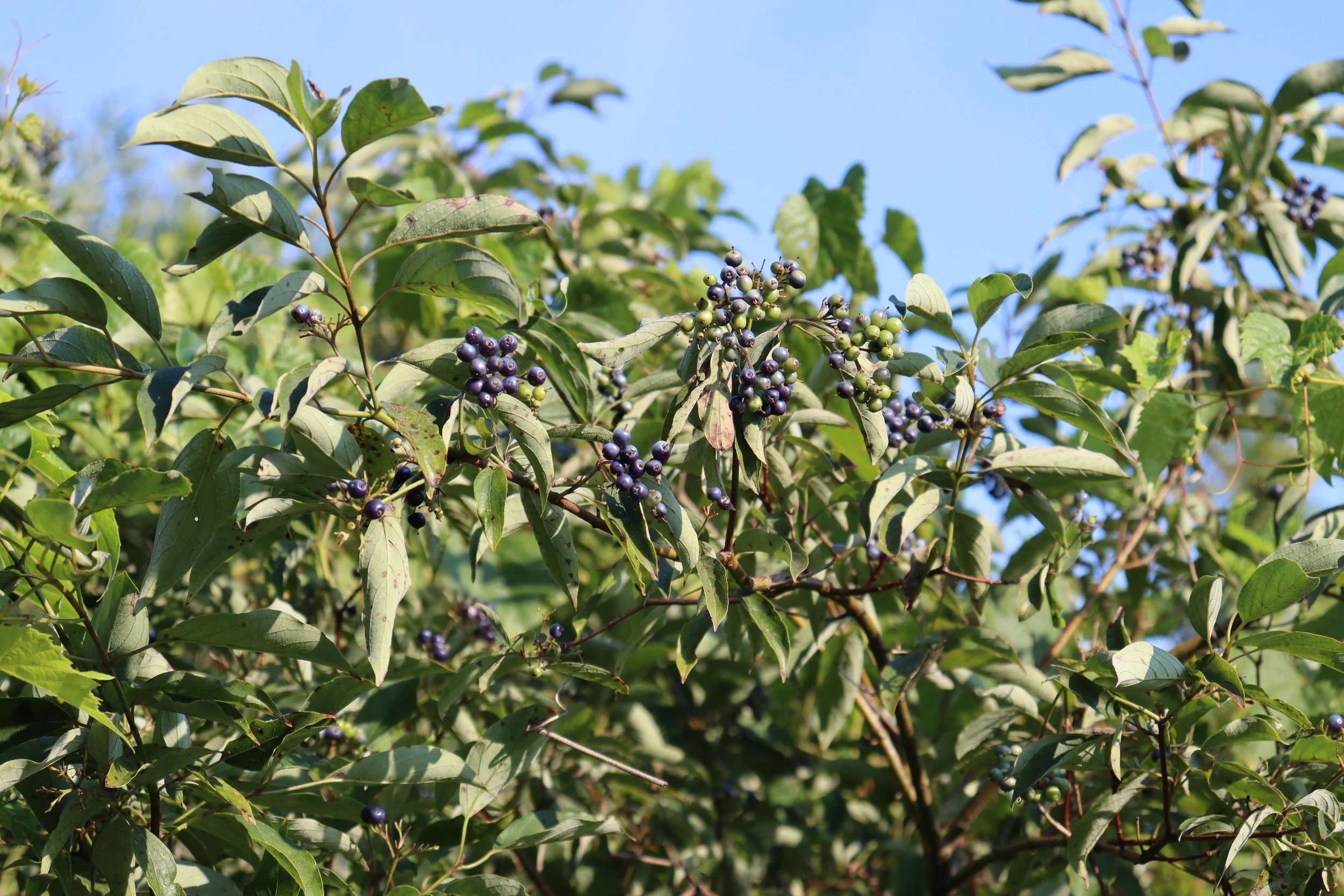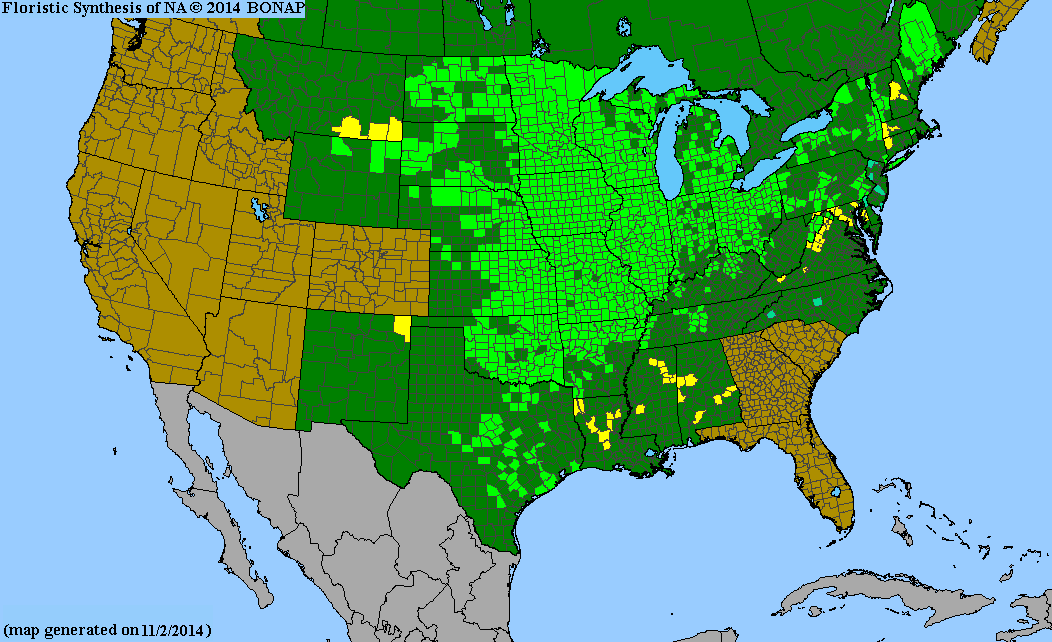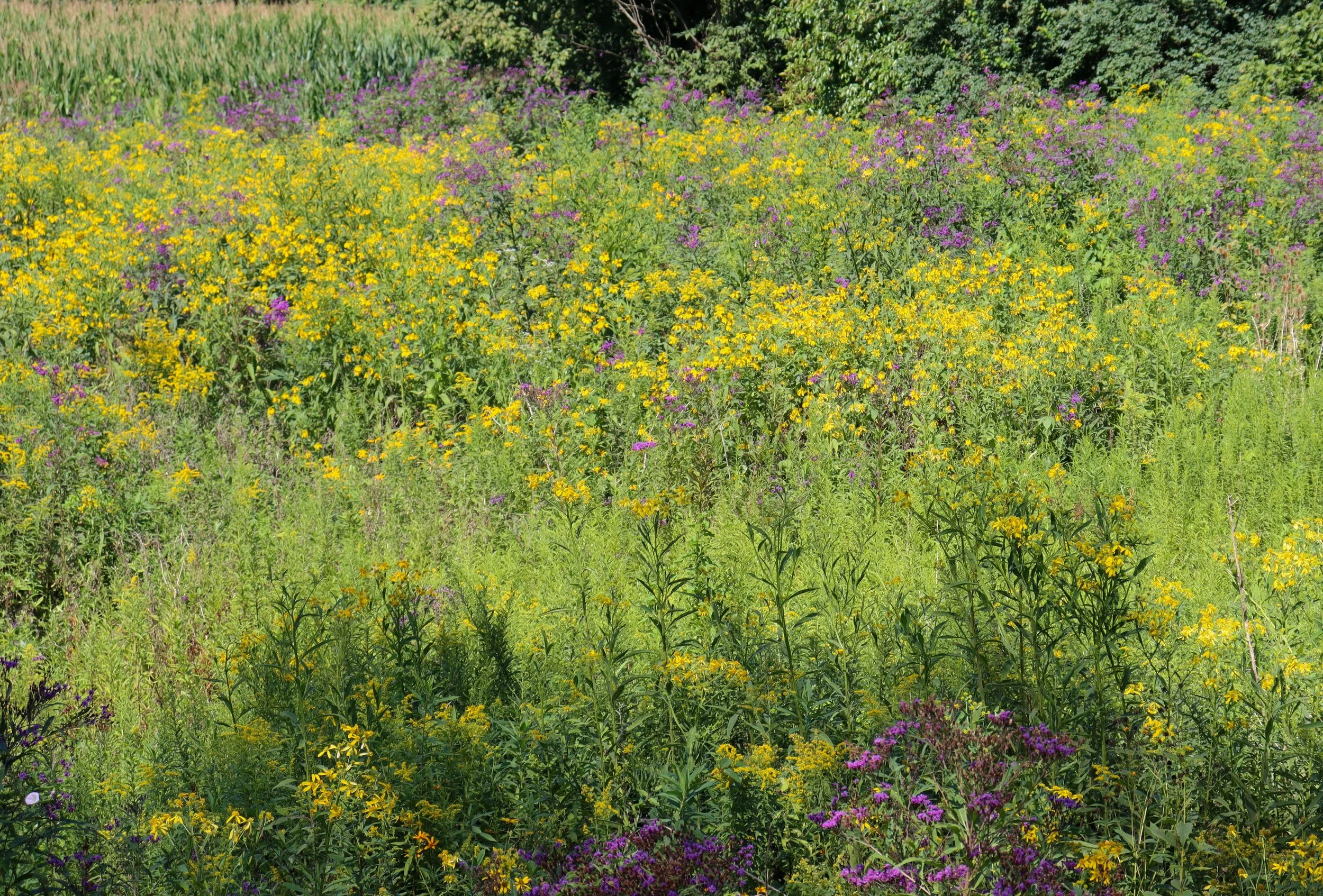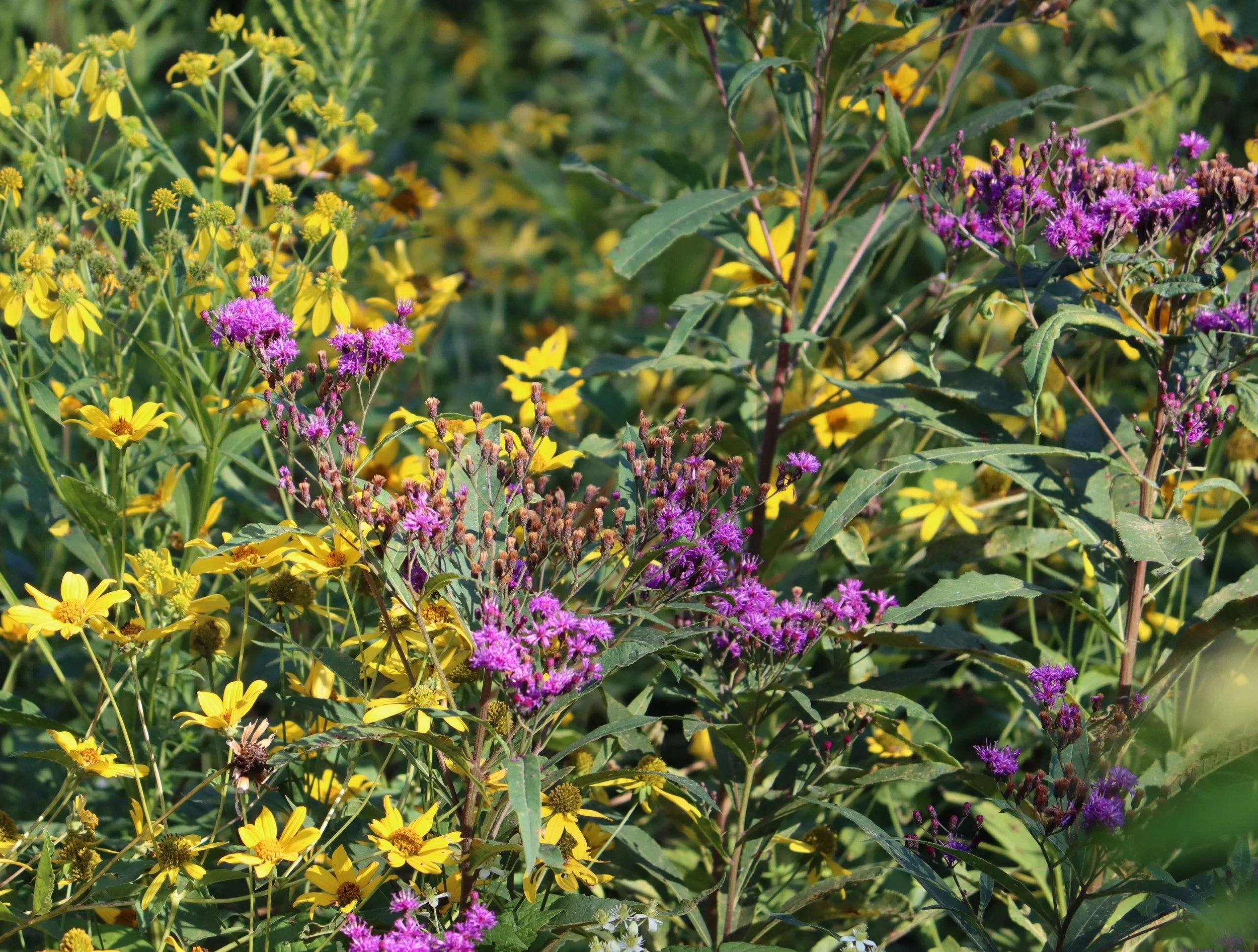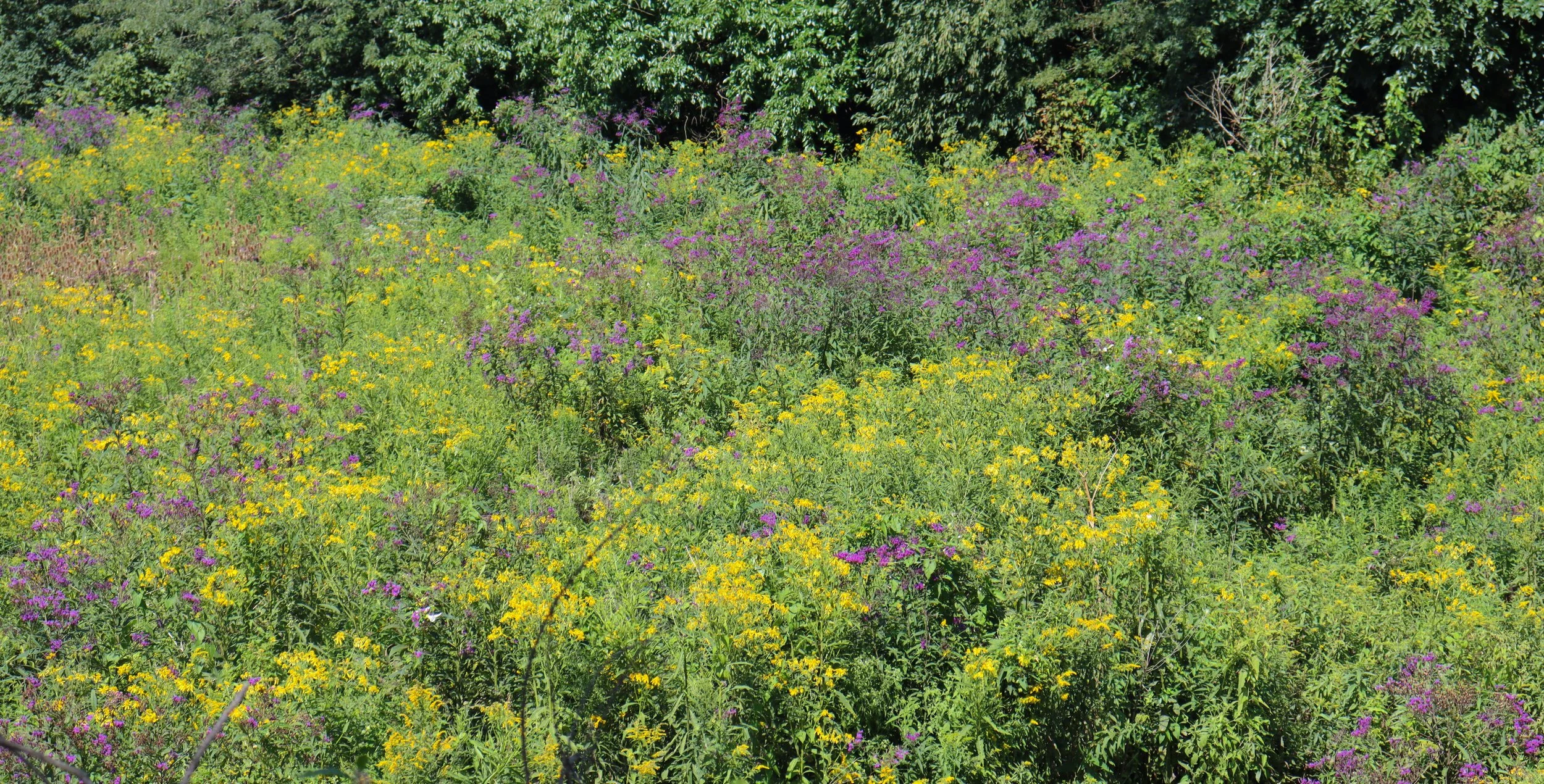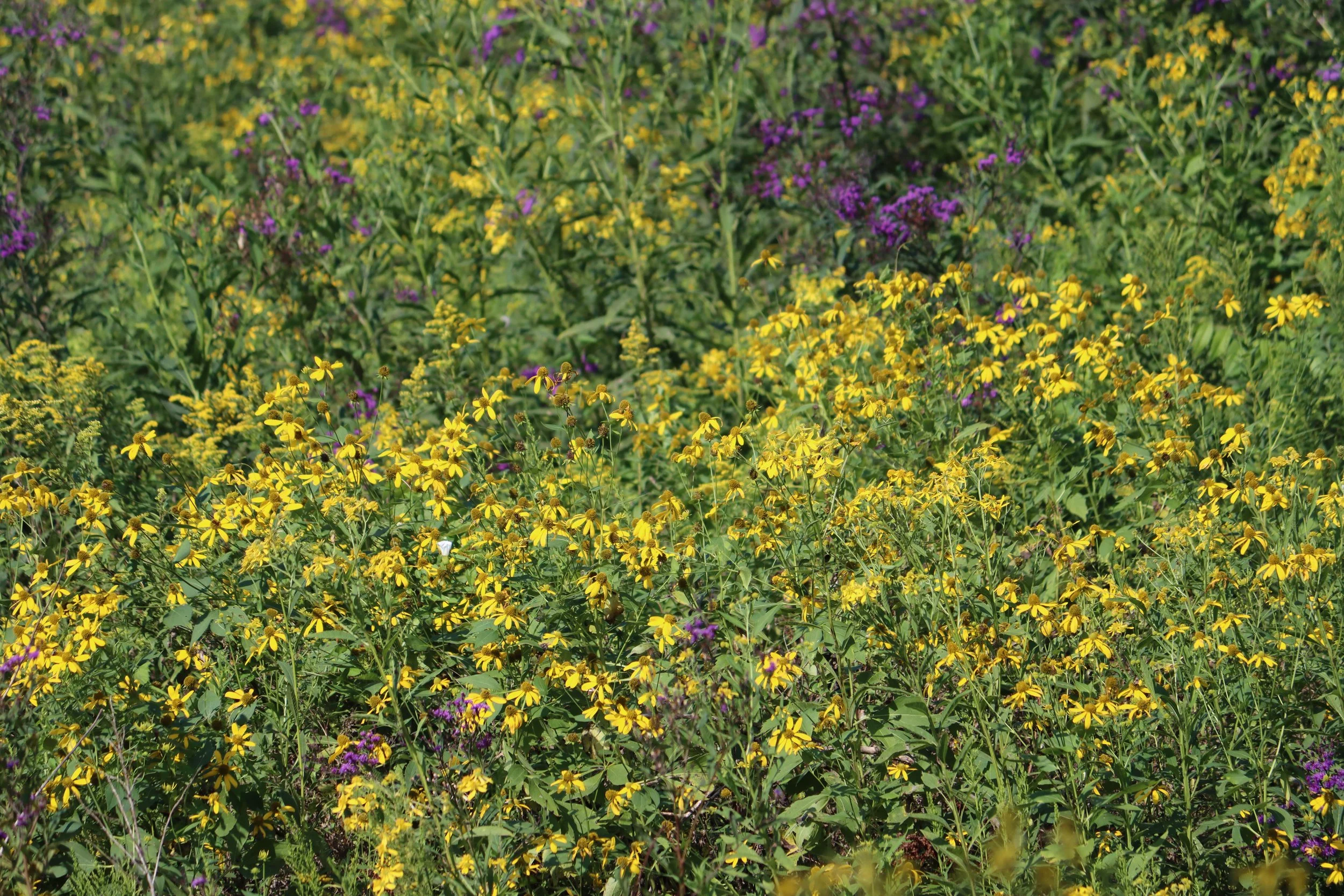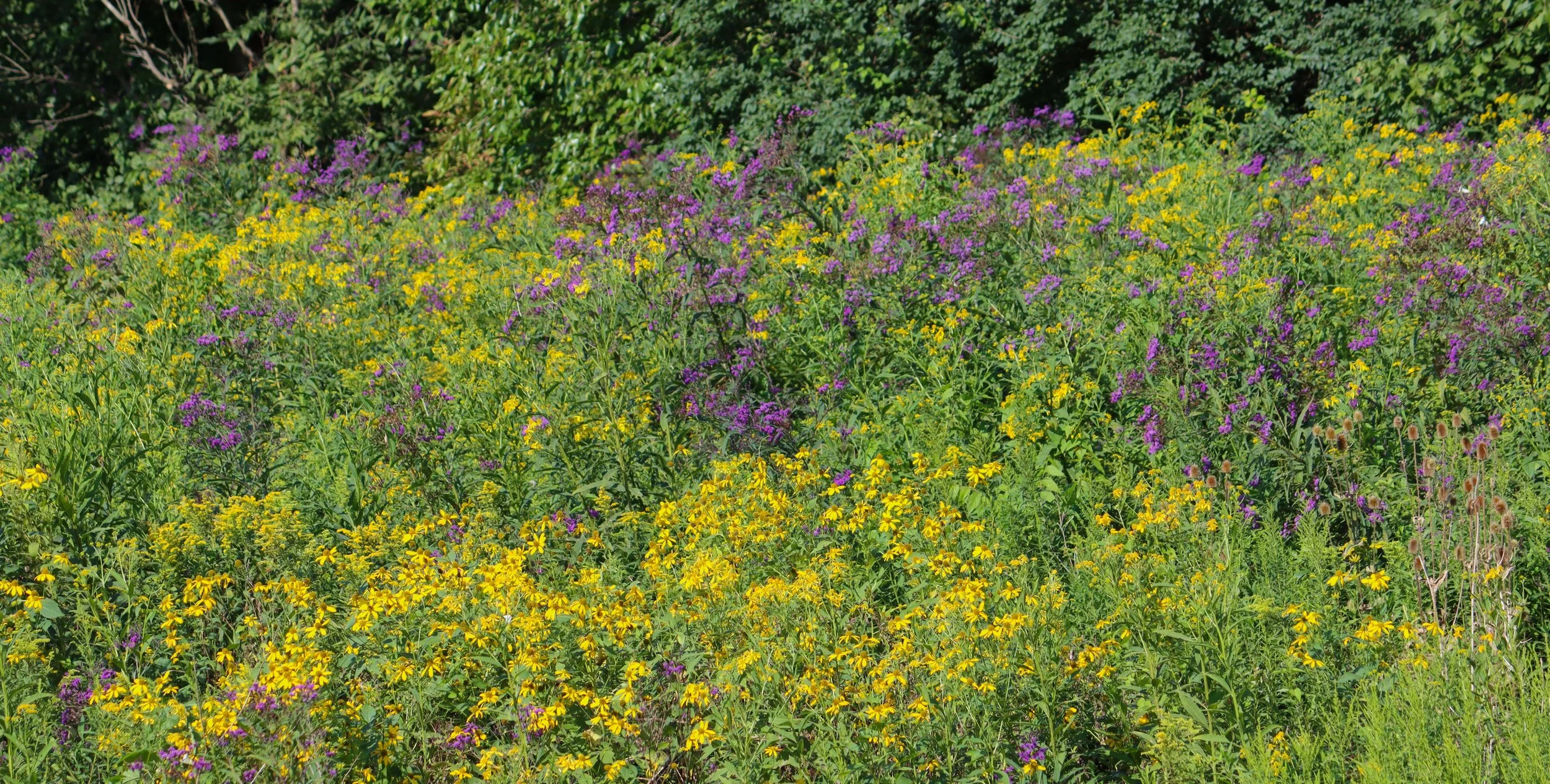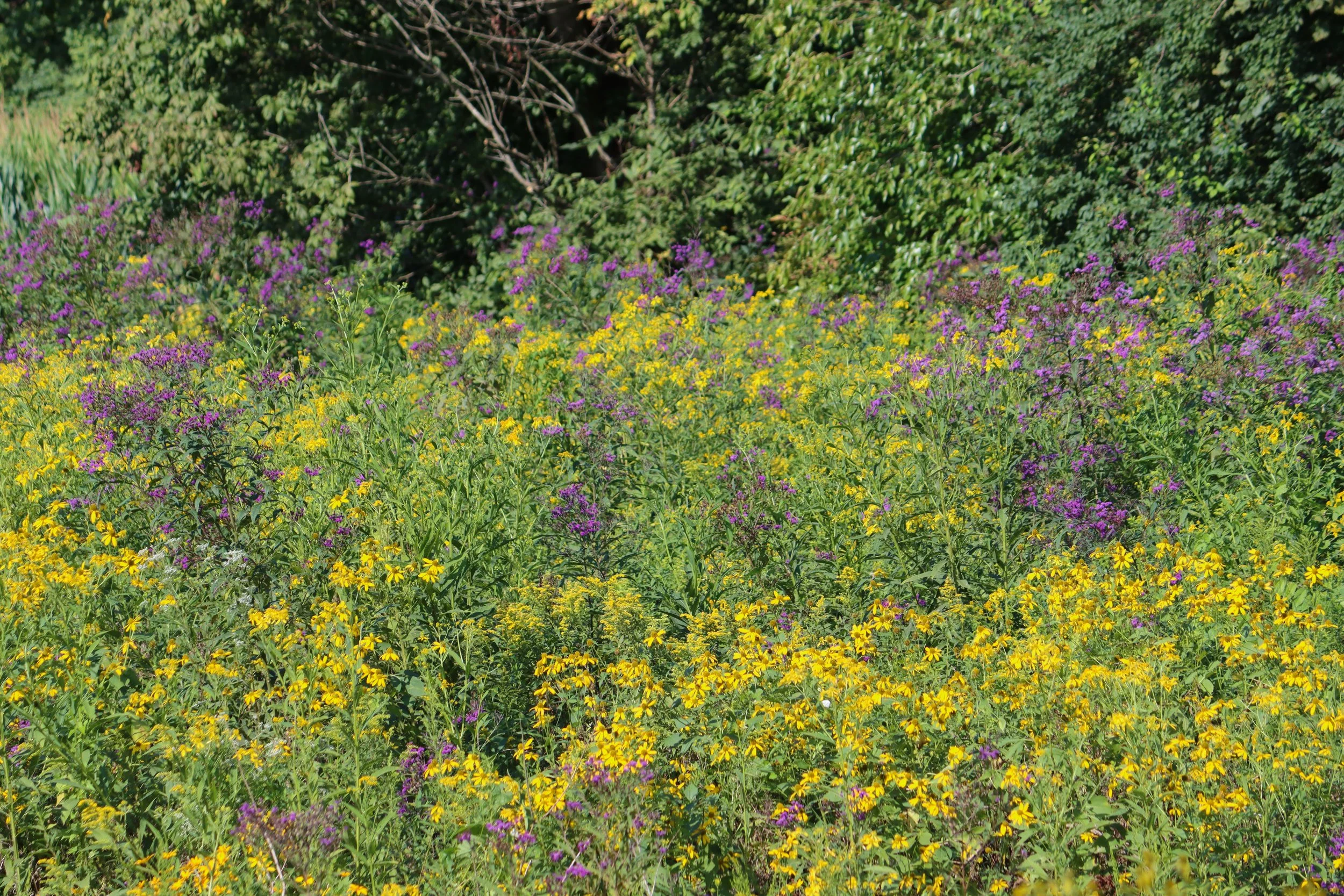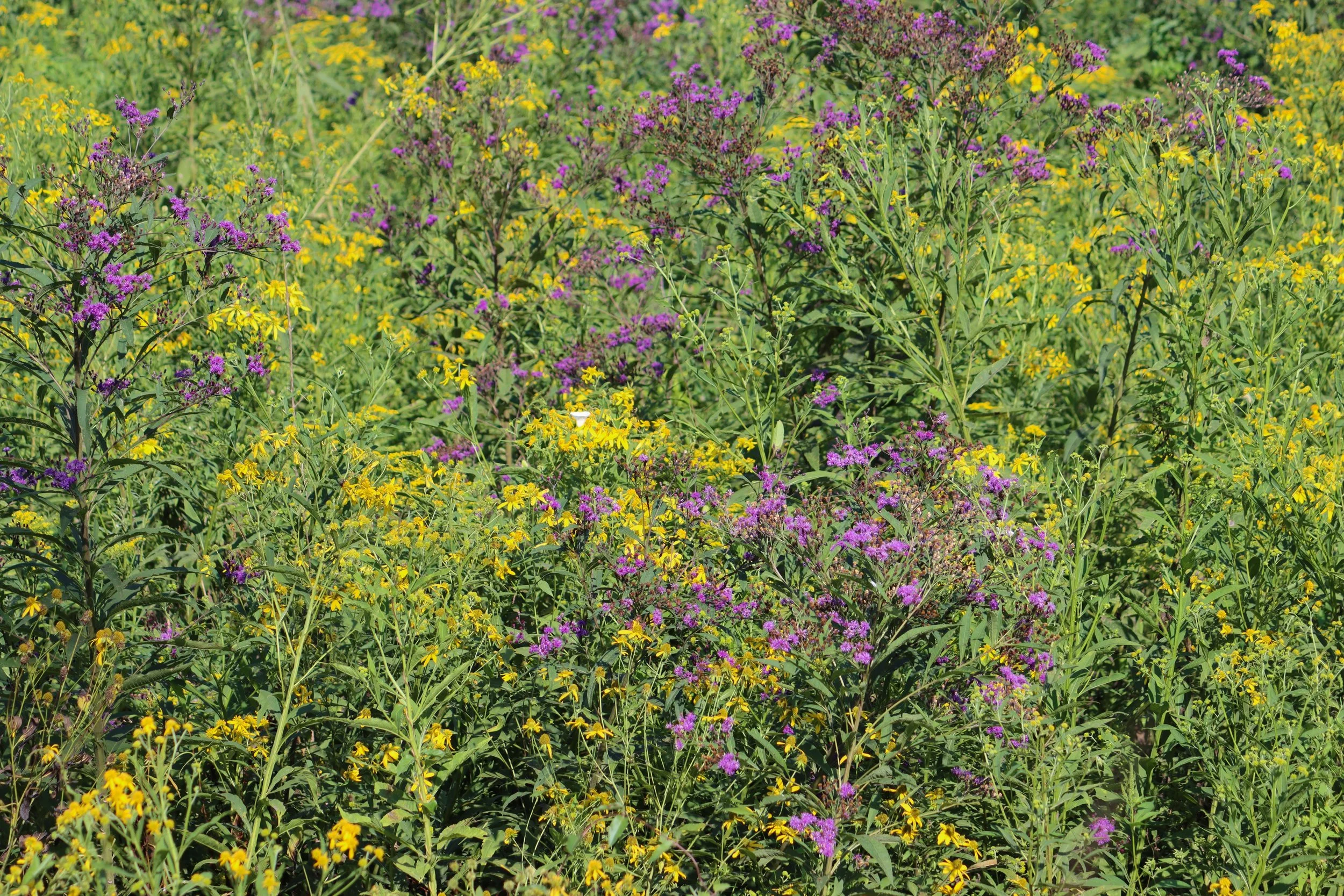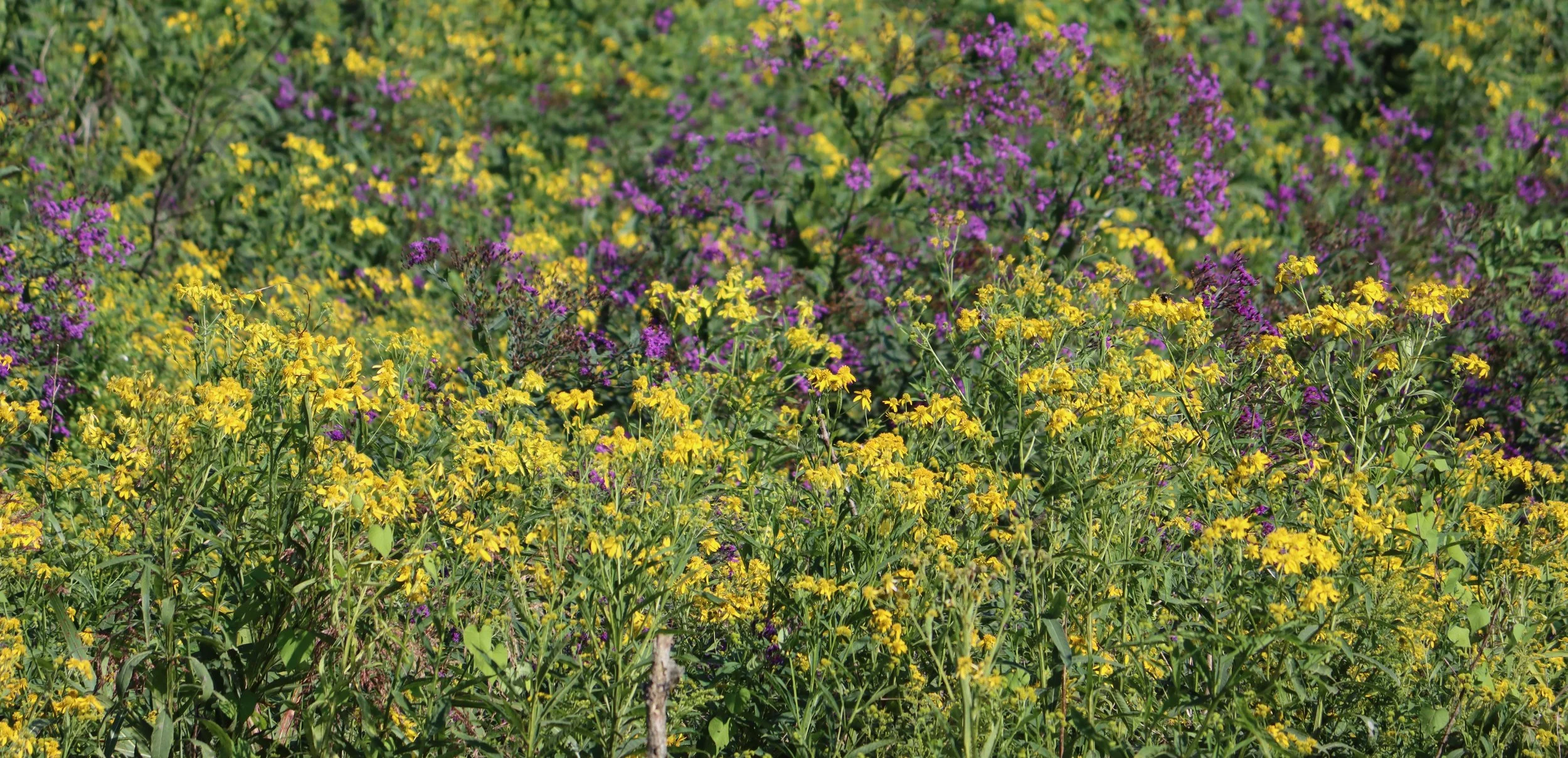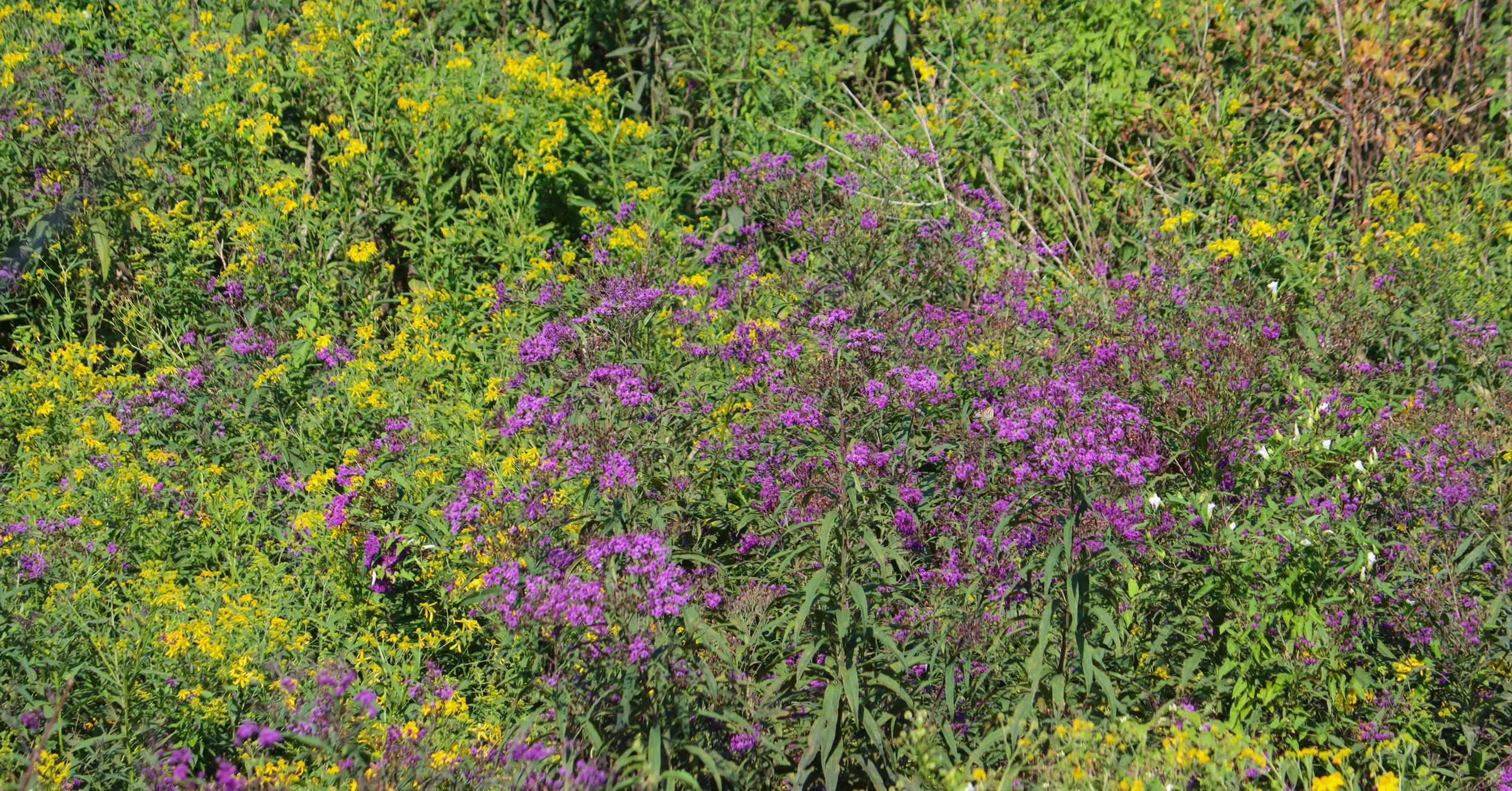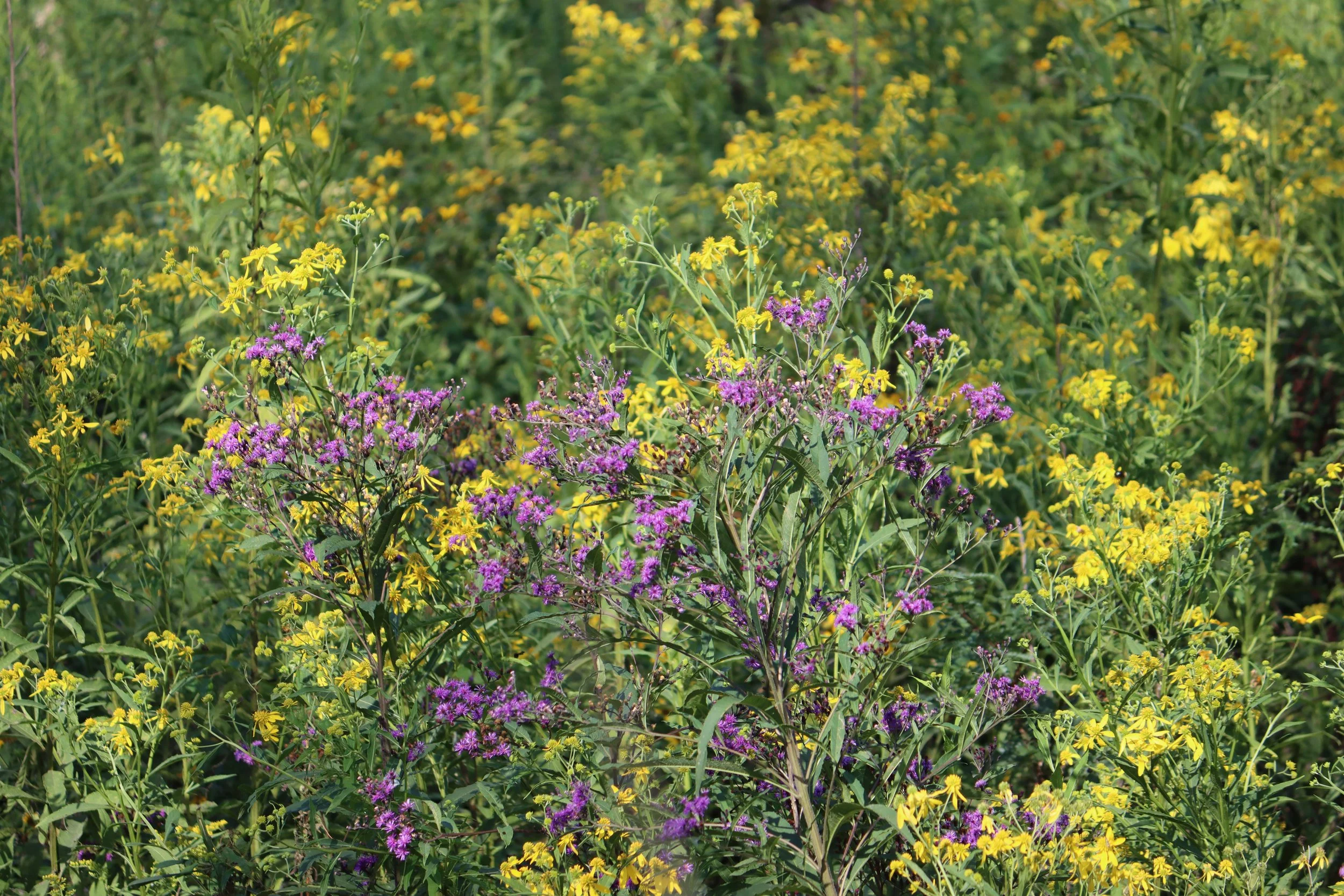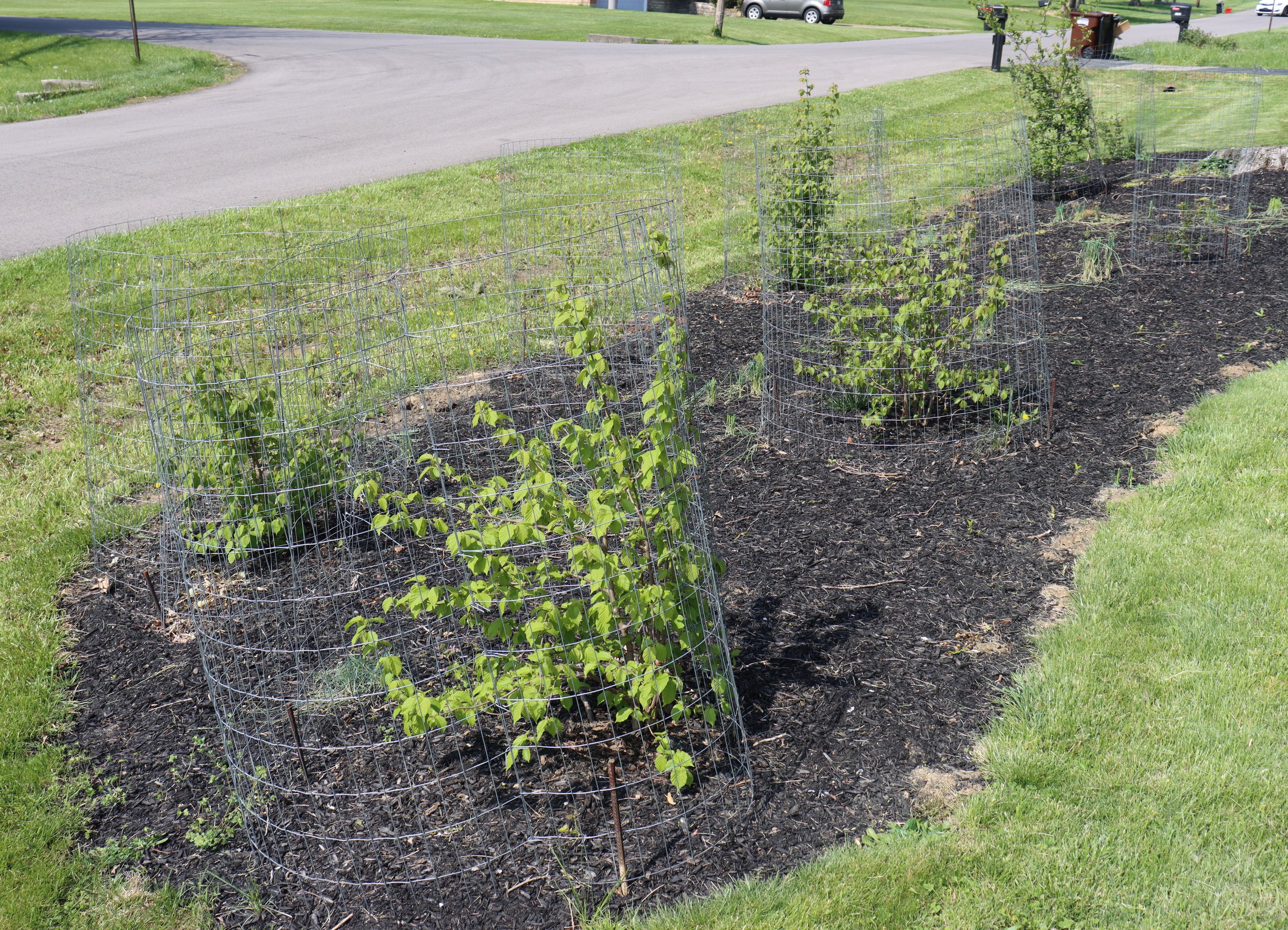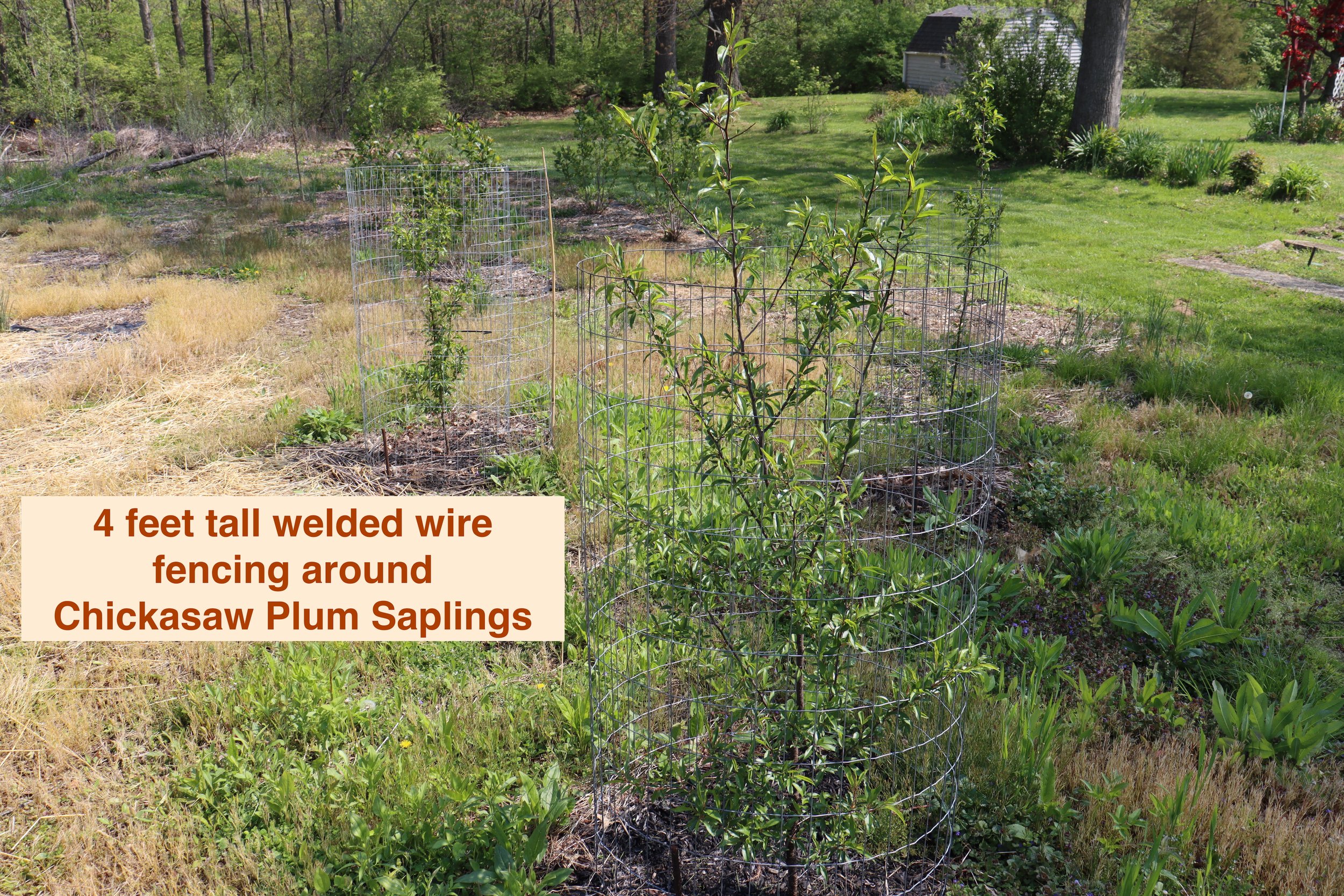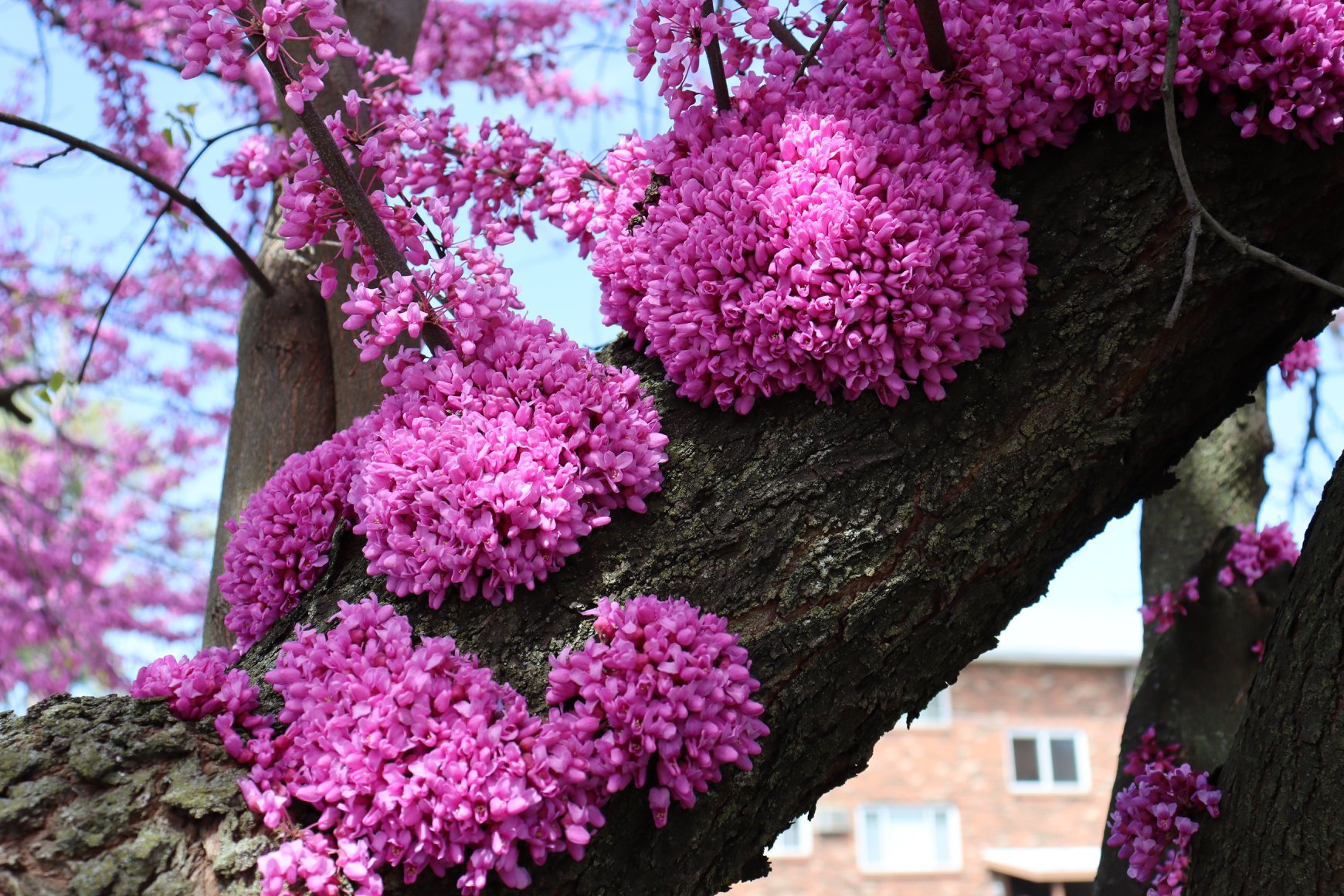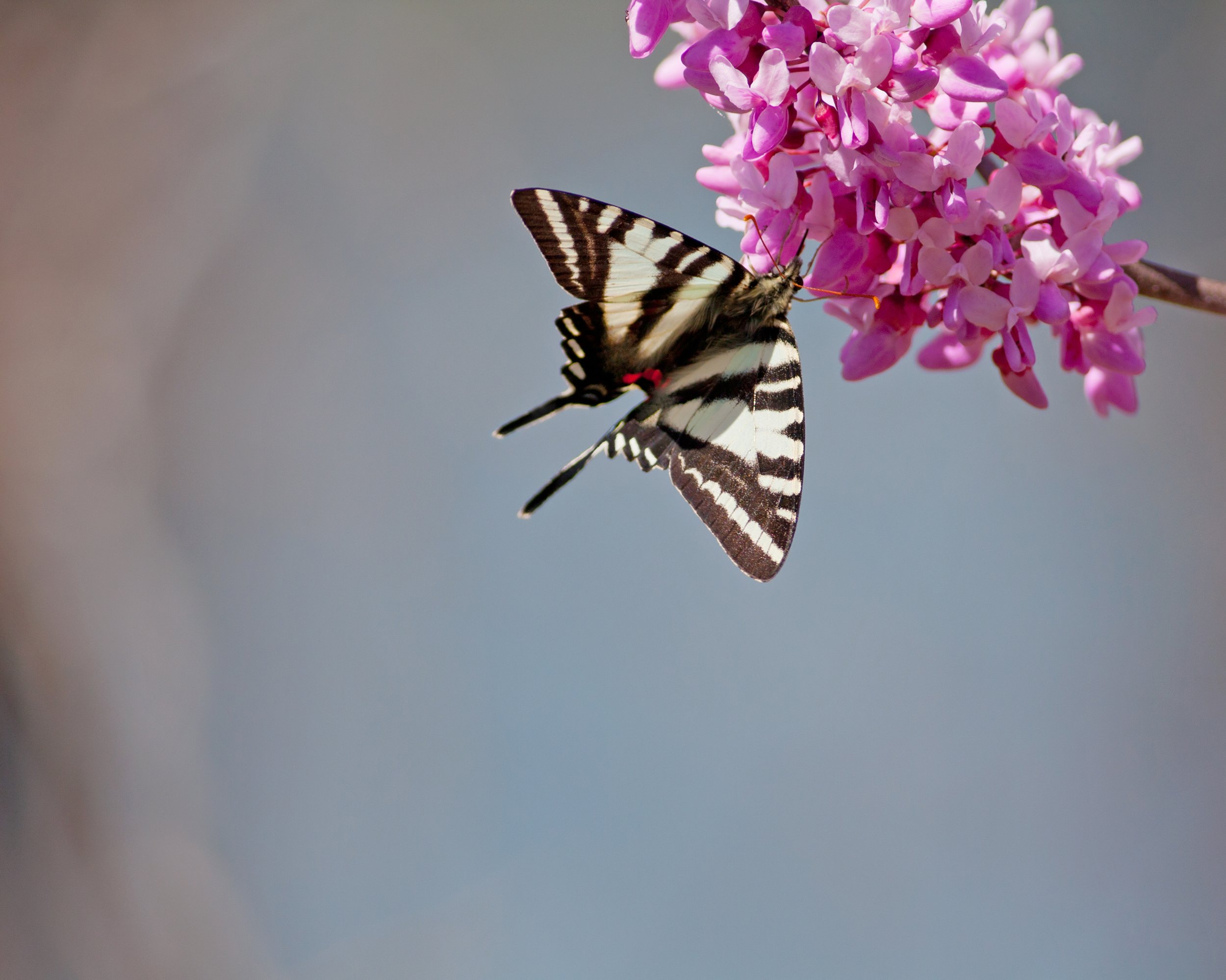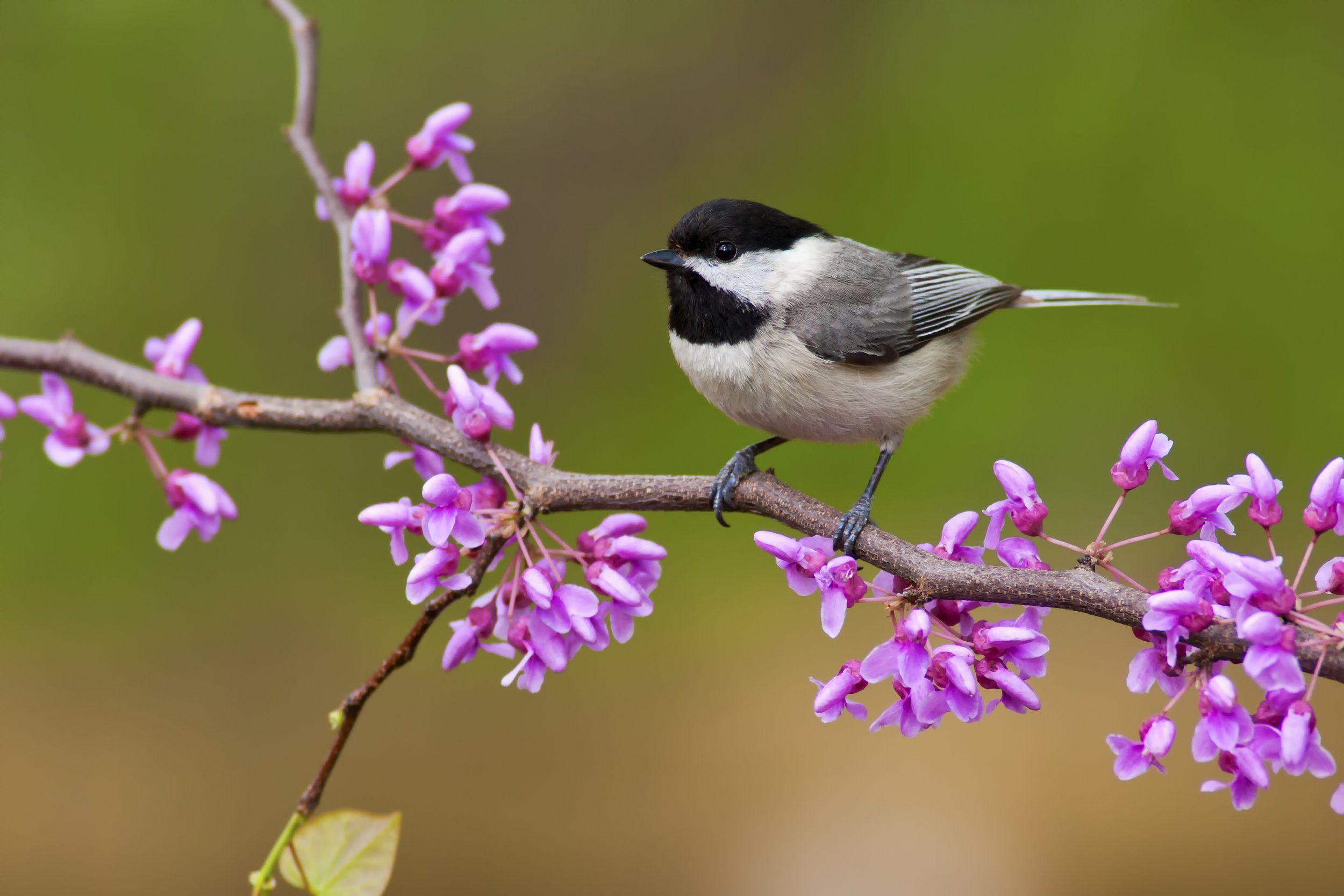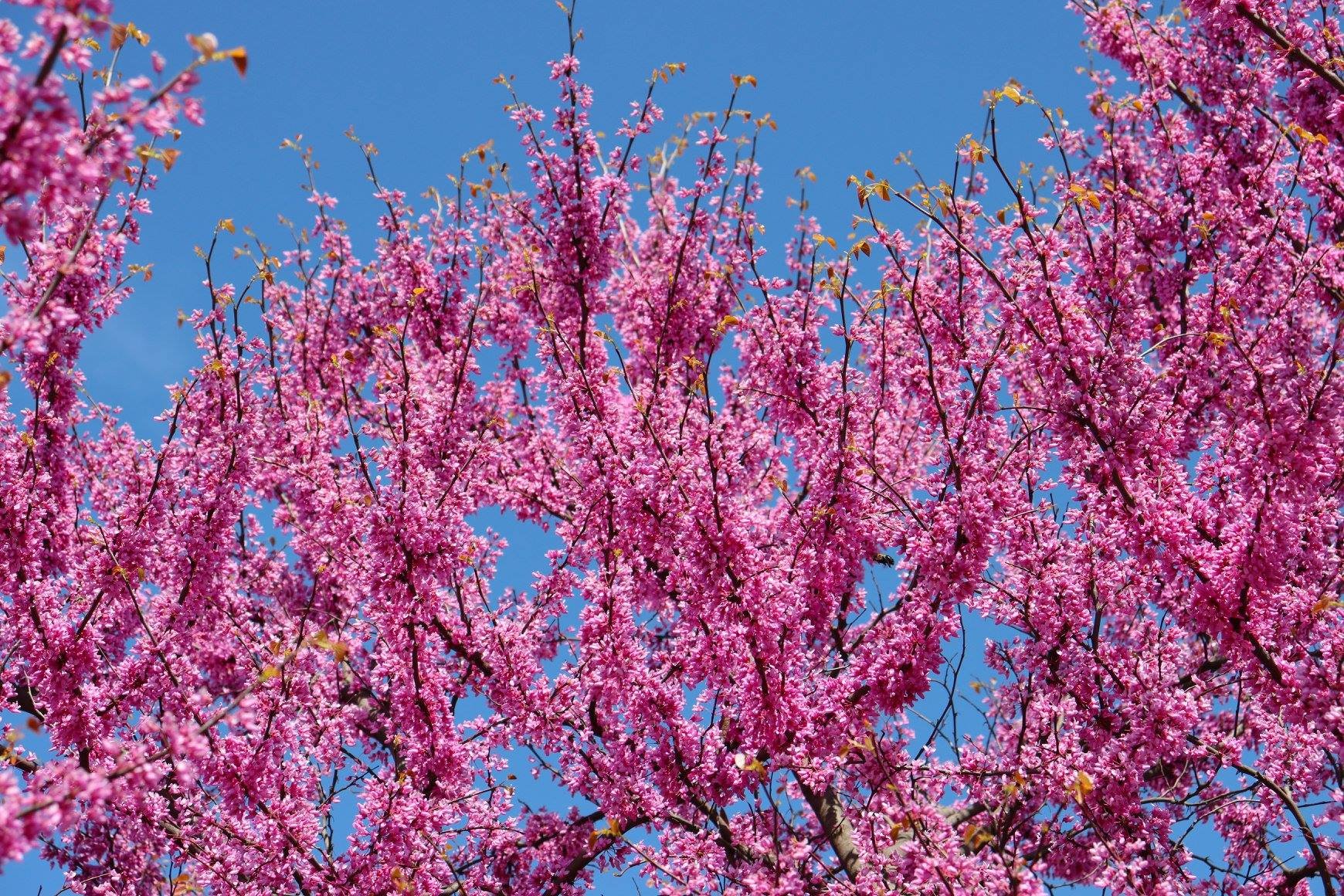Pictured here is a Black Walnut (Juglans nigra) which gets a bad perception because of a debunked myth that Black Walnuts actively kill or inhibit other plants with chemicals exuded from their roots, leaves, and husks. Native Plants, which have coevolved with Black Walnuts, are highly adapted to growing around and underneath them as well as non-native plants. Black Walnuts are actually one of the friendliest canopy trees to co-exist with other plants because of 2 reasons. They are one of the last trees to produce leaves in the spring, giving early season plants plenty of sun exposure in early to mid spring - and they are one of the first trees to drop their leaves giving late-season plants plenty of late summer-early fall sun exposure. Black Walnuts often have trunk clinging vines on them like Virginia Creeper and Trumpet Creeper because of how much sunlight they let through in the early and late season. They also do not produce as dense of shade as Oaks, Maples, or Hickories during the summer. For plants like Spring Ephemerals, Black Walnuts are one of the best trees to co-exist with.
In the acidic glacial till soil of the upland; Black Walnut and American Beech are present as PH generalist species able to grow in both alkaline and acidic soils.
In Native Plant Agriculture, Black Walnut Cultivars have been selected for heavy annual yields, larger nutmeat, and thinner shells. Wild Black Walnuts need to be properly processed to bring out their rich flavor. A company in Missouri by the name of Hammons Black Walnuts is one of the largest black walnut processors and sellers in the country, proving that even wild Black Walnuts have commercial viability. As a woodland canopy crop, they're equally adapted to acidic soil as much as they are to alkaline soil making them a PH generalist. They can tolerant seasonal flooding, and thrive in moderate moisture soils as well.
A lesser known tidbit about Black Walnuts is they can be tapped like Sugar Maples to produce their own kind of Black Walnut syrup. Look up the Black Walnut Syrup Makers Facebook group to find out more about this topic.






